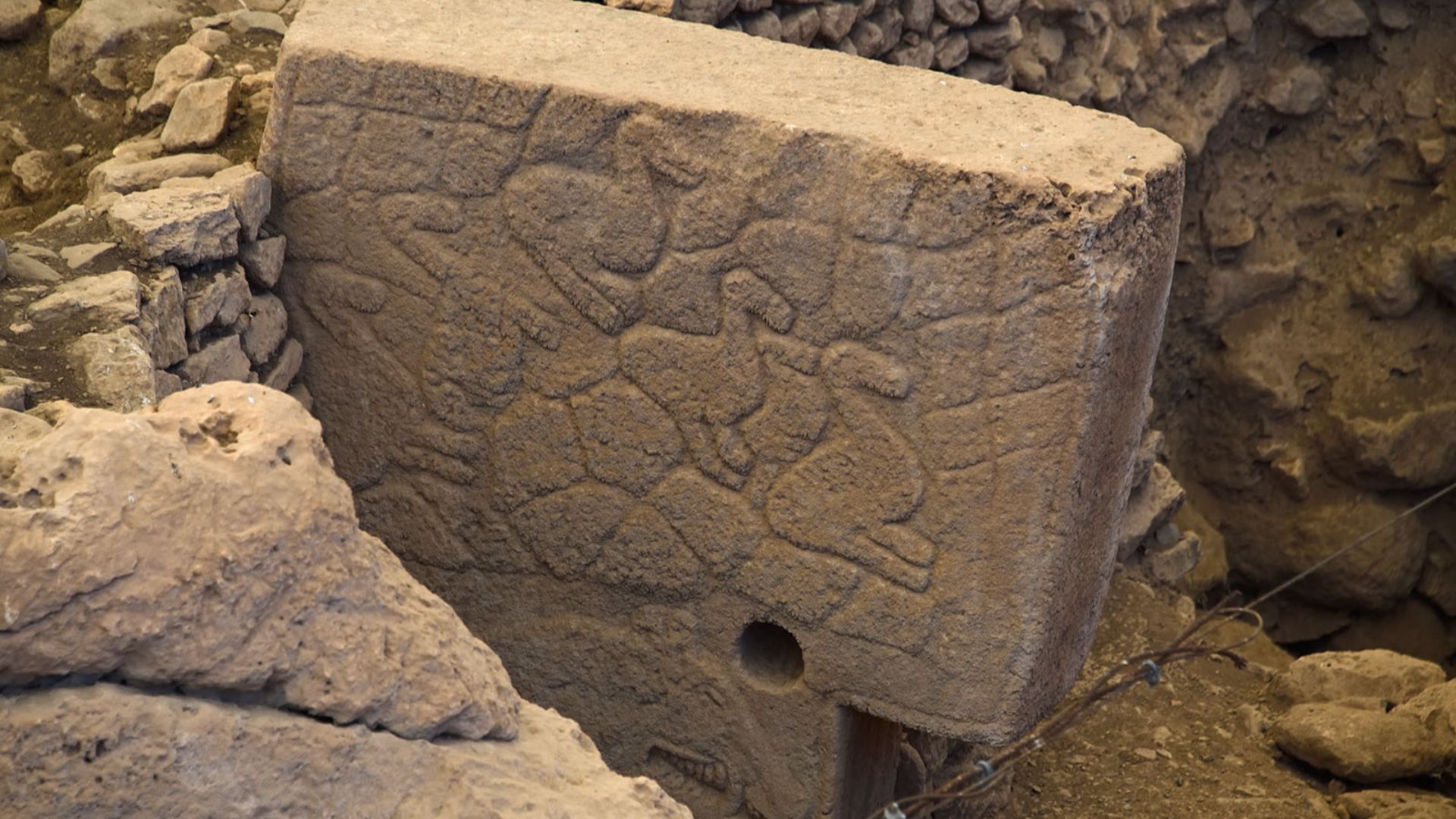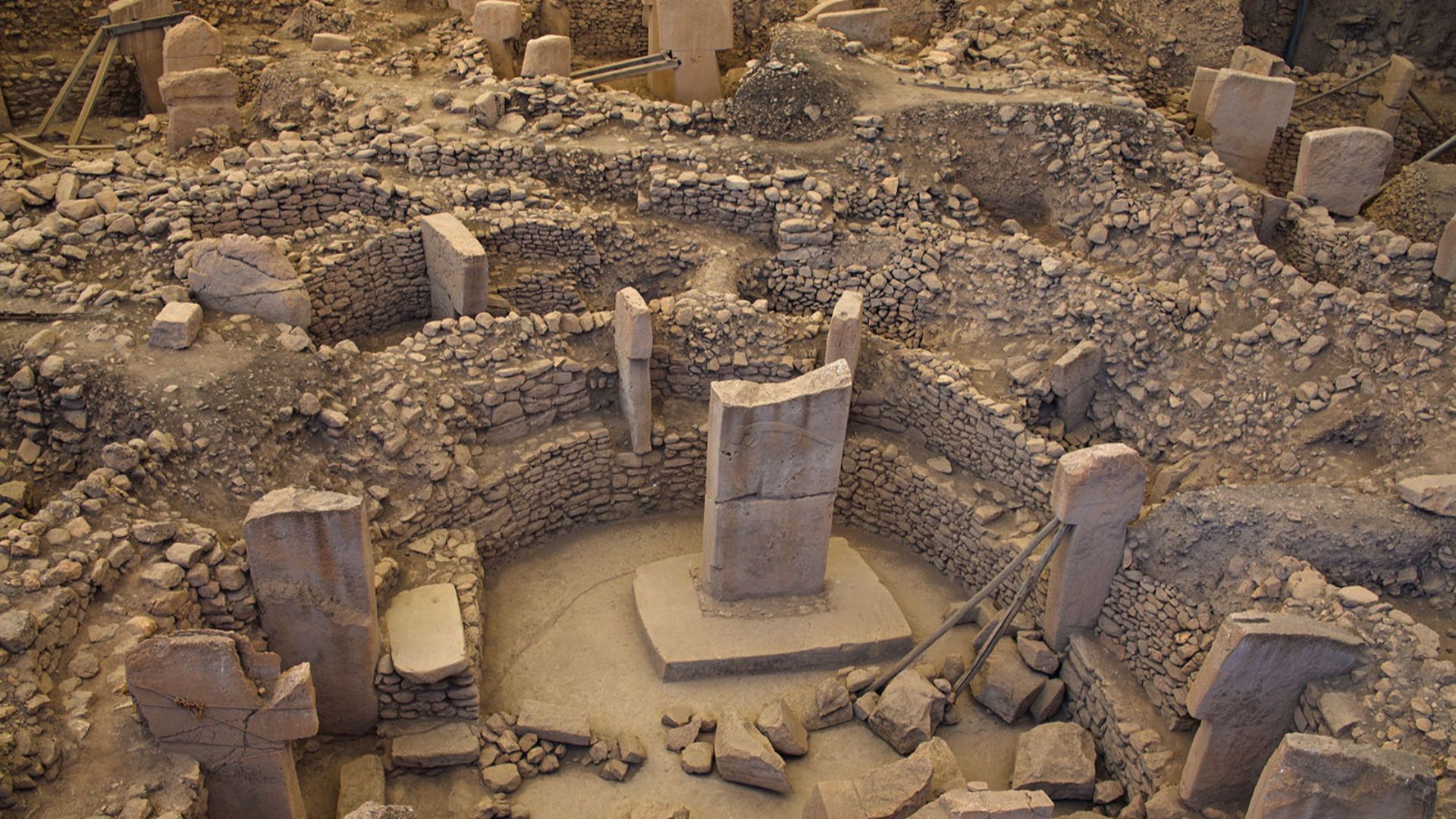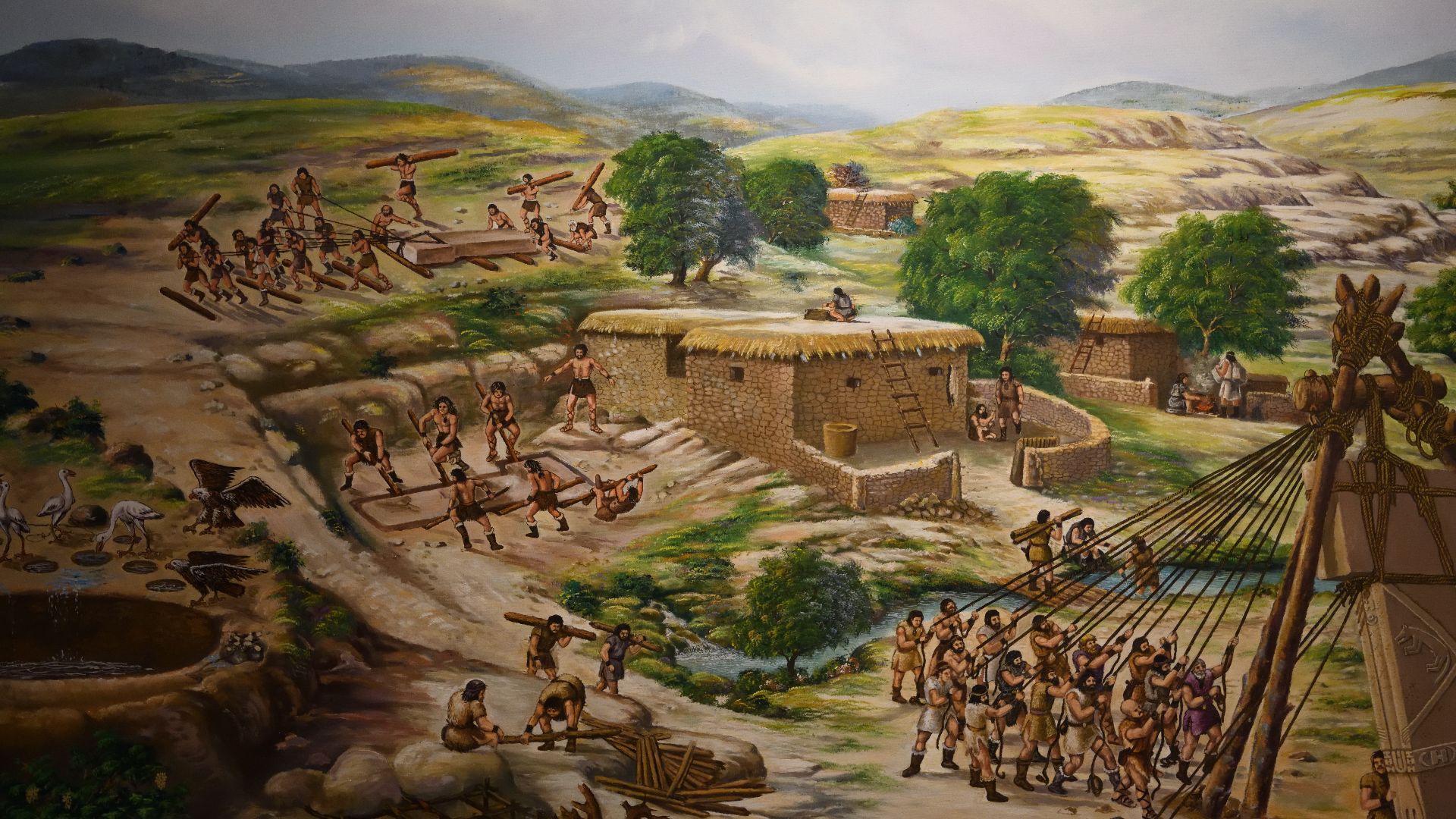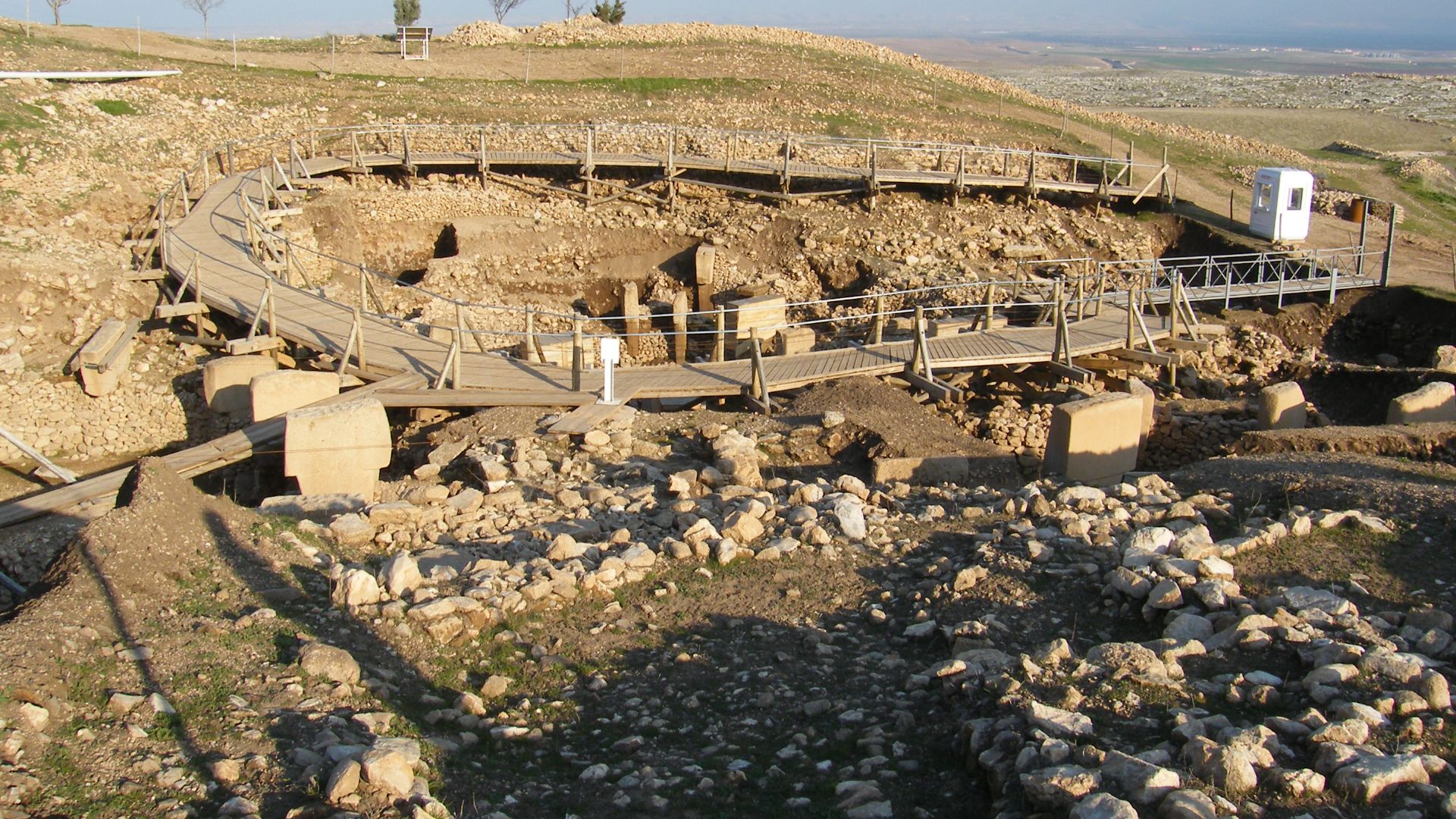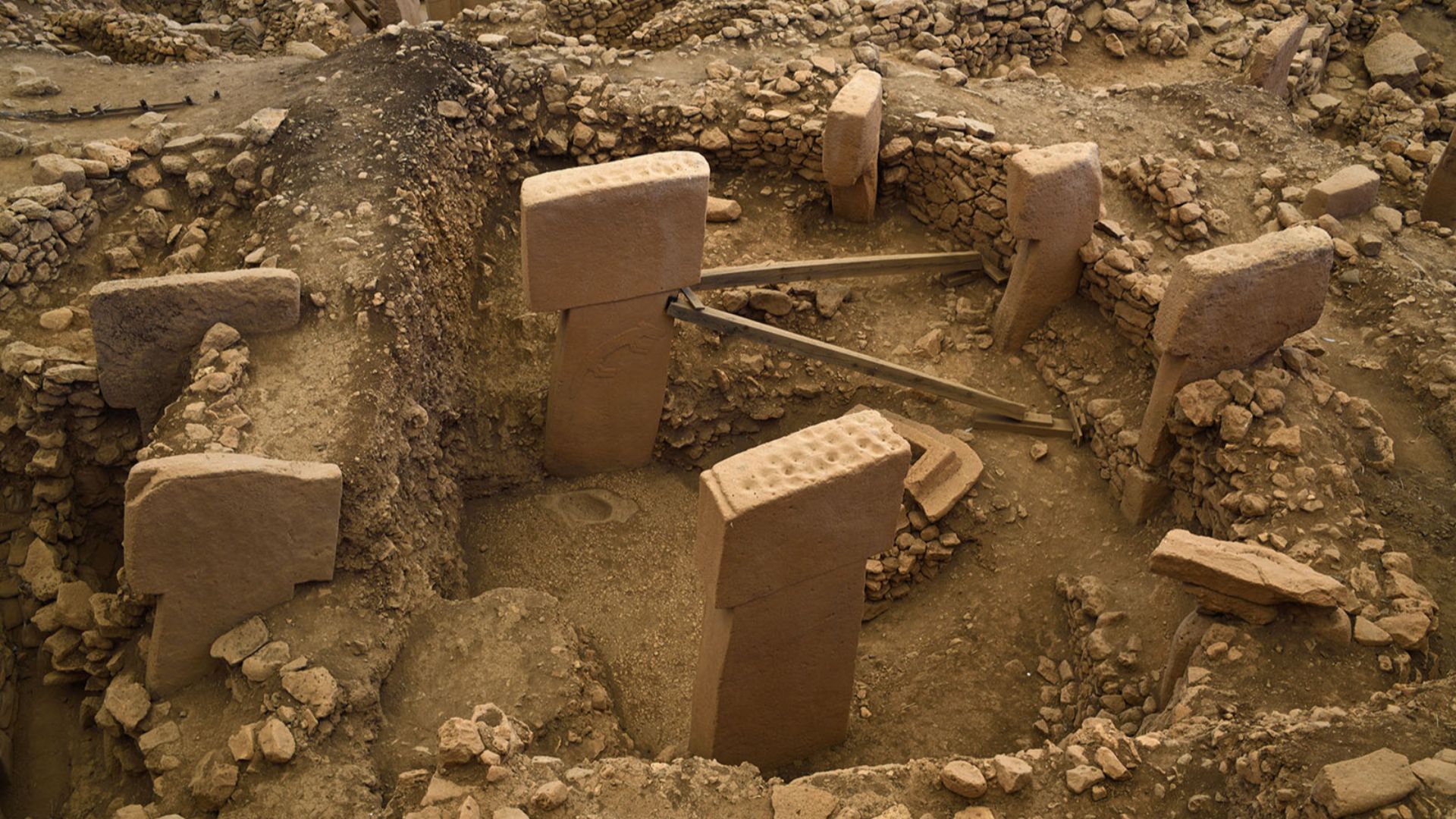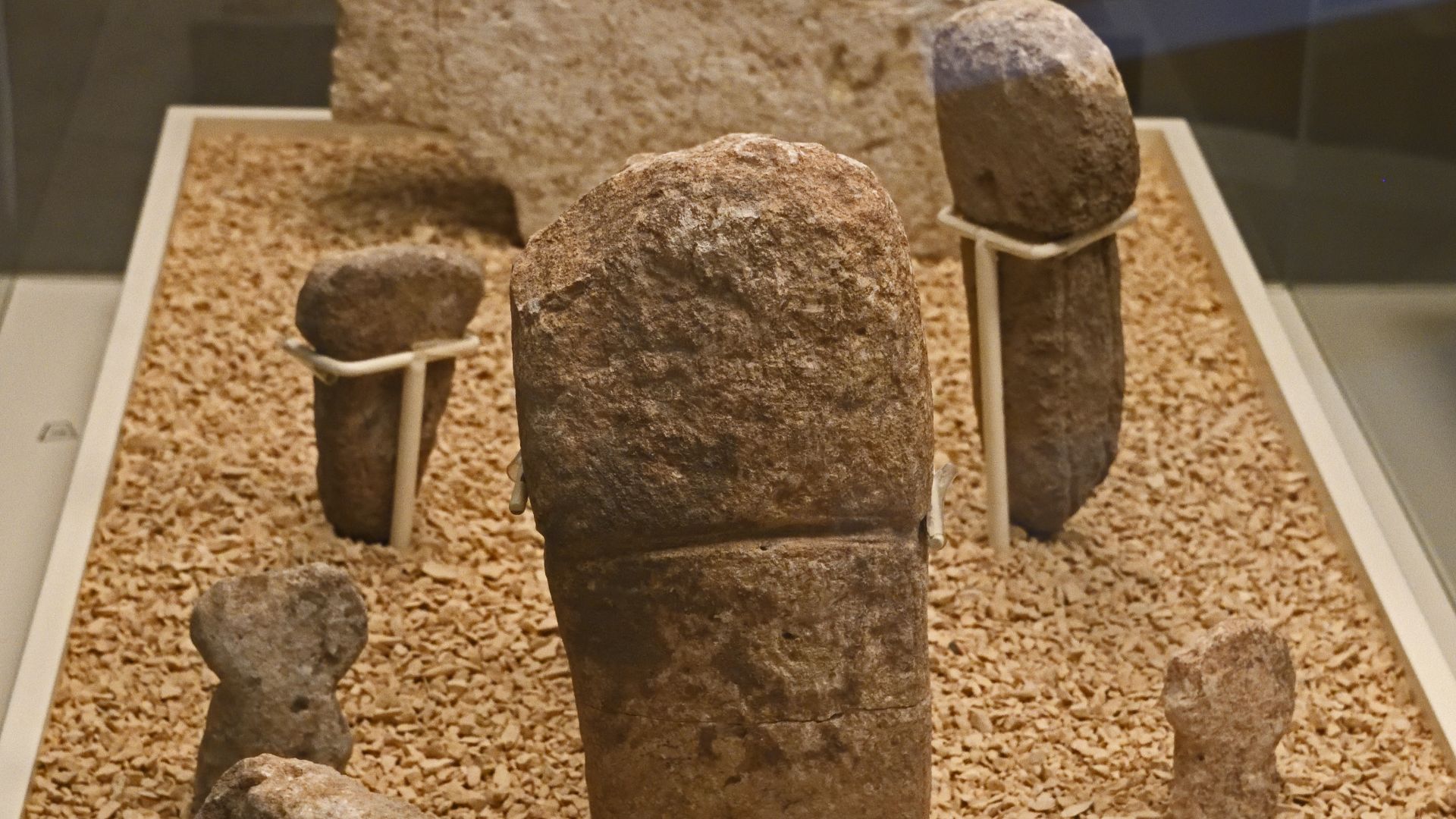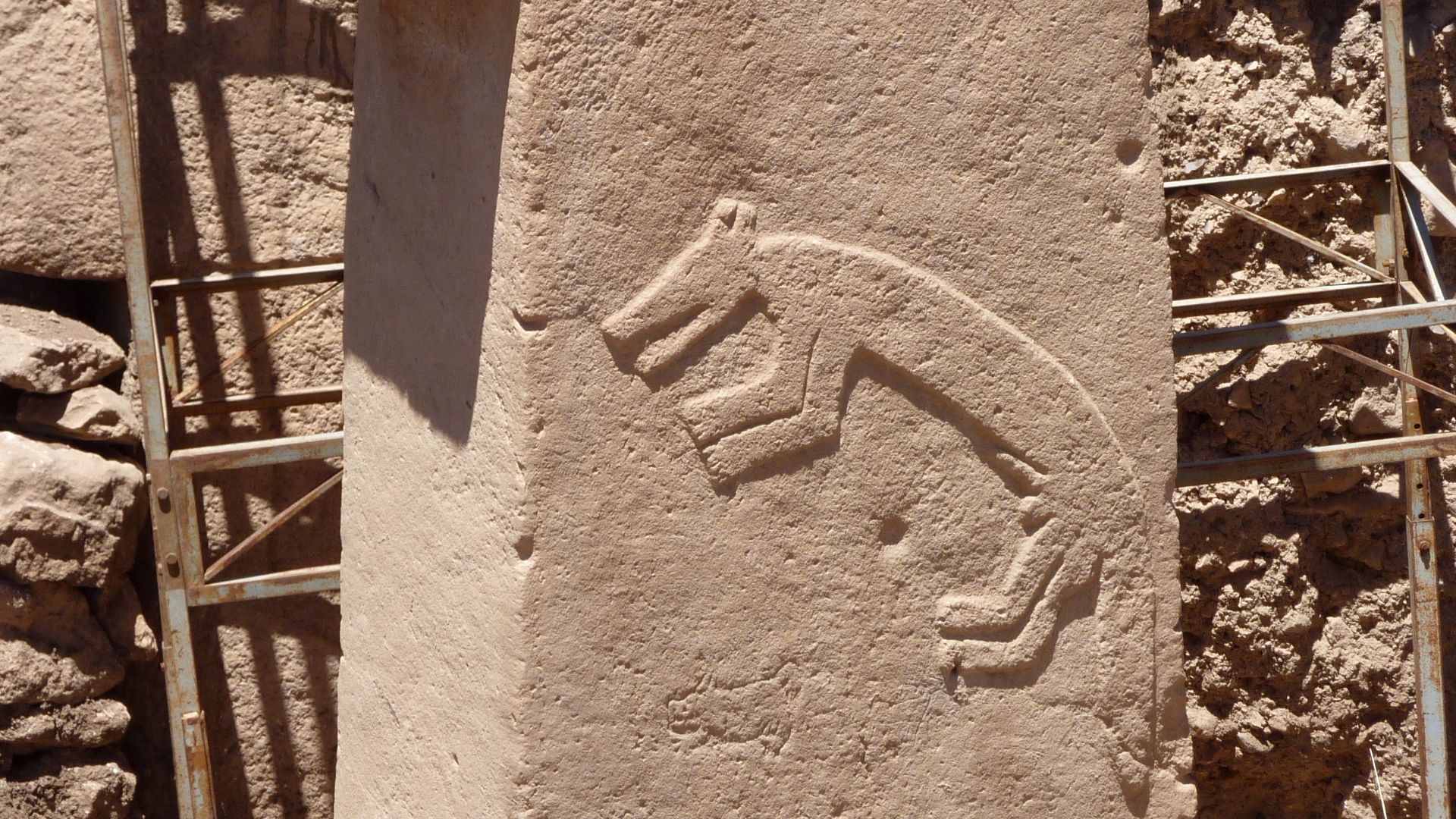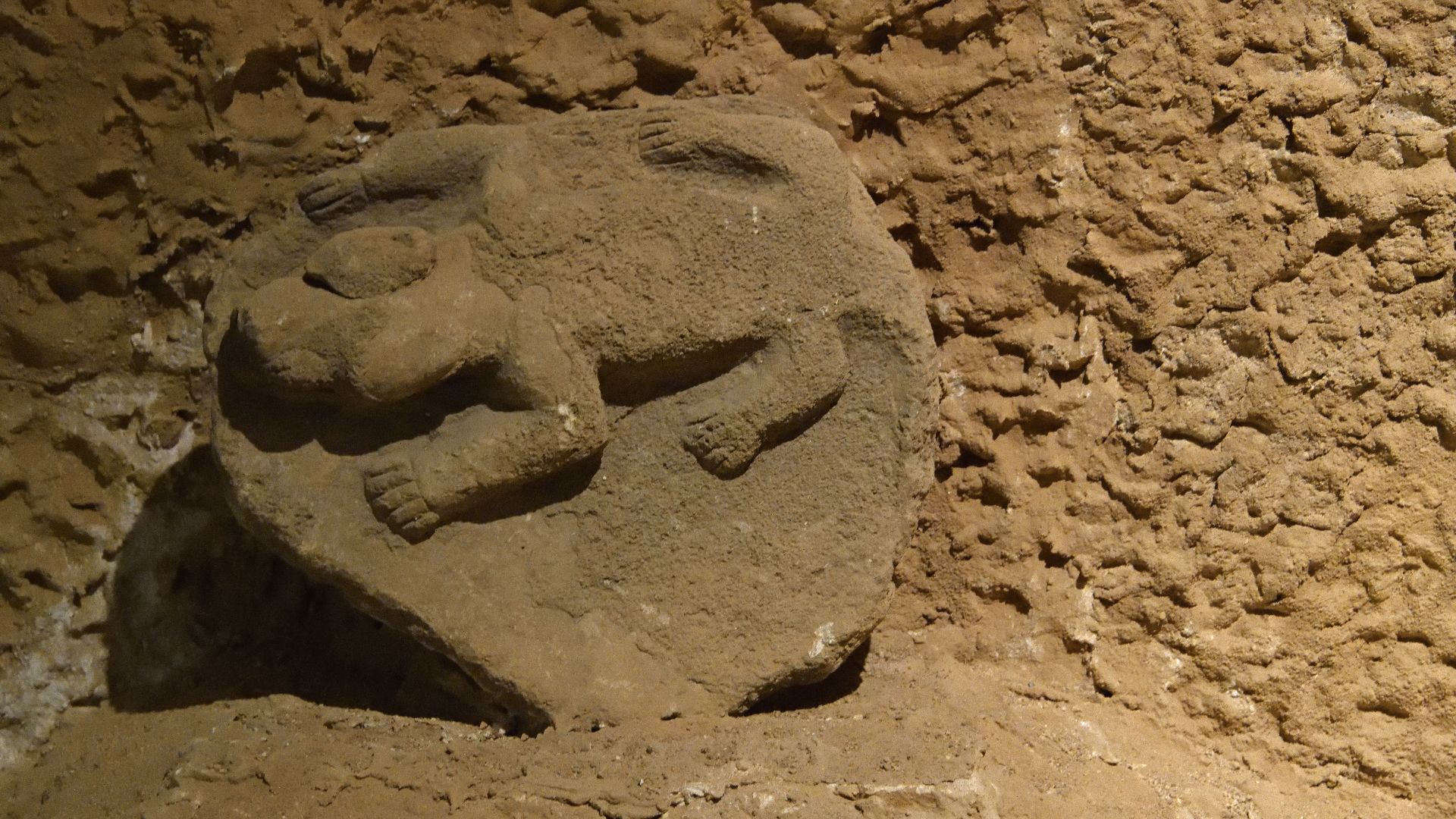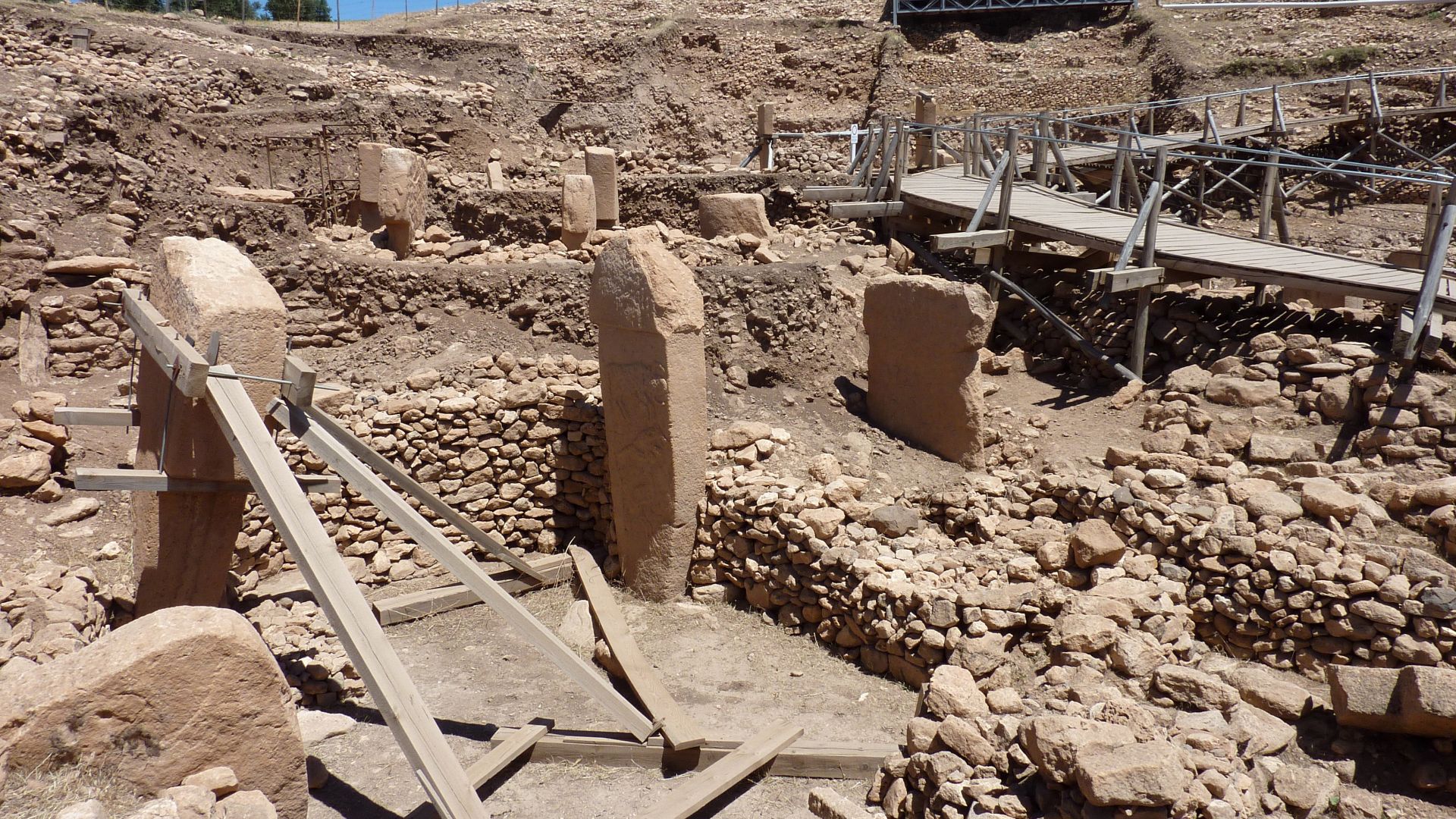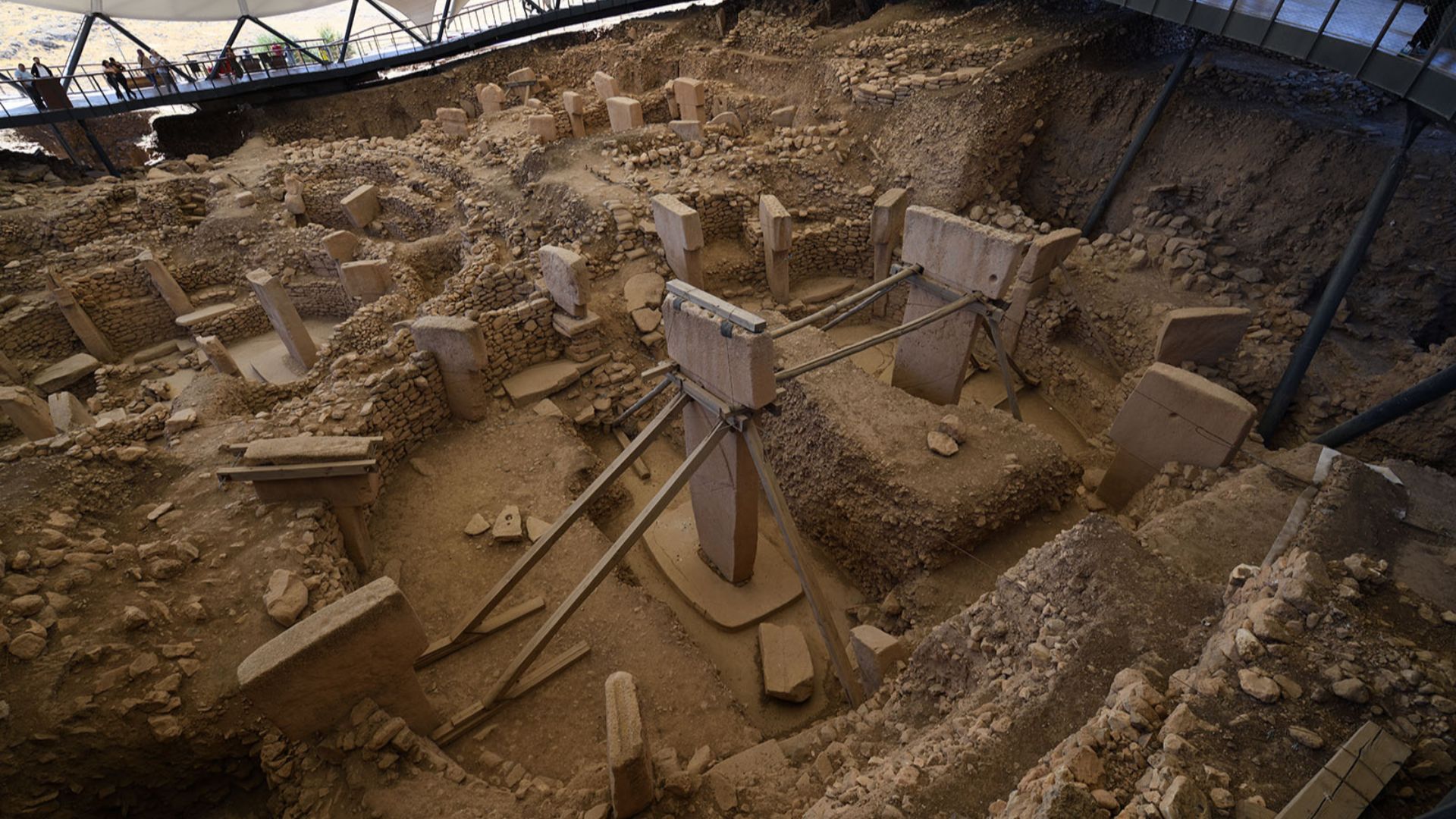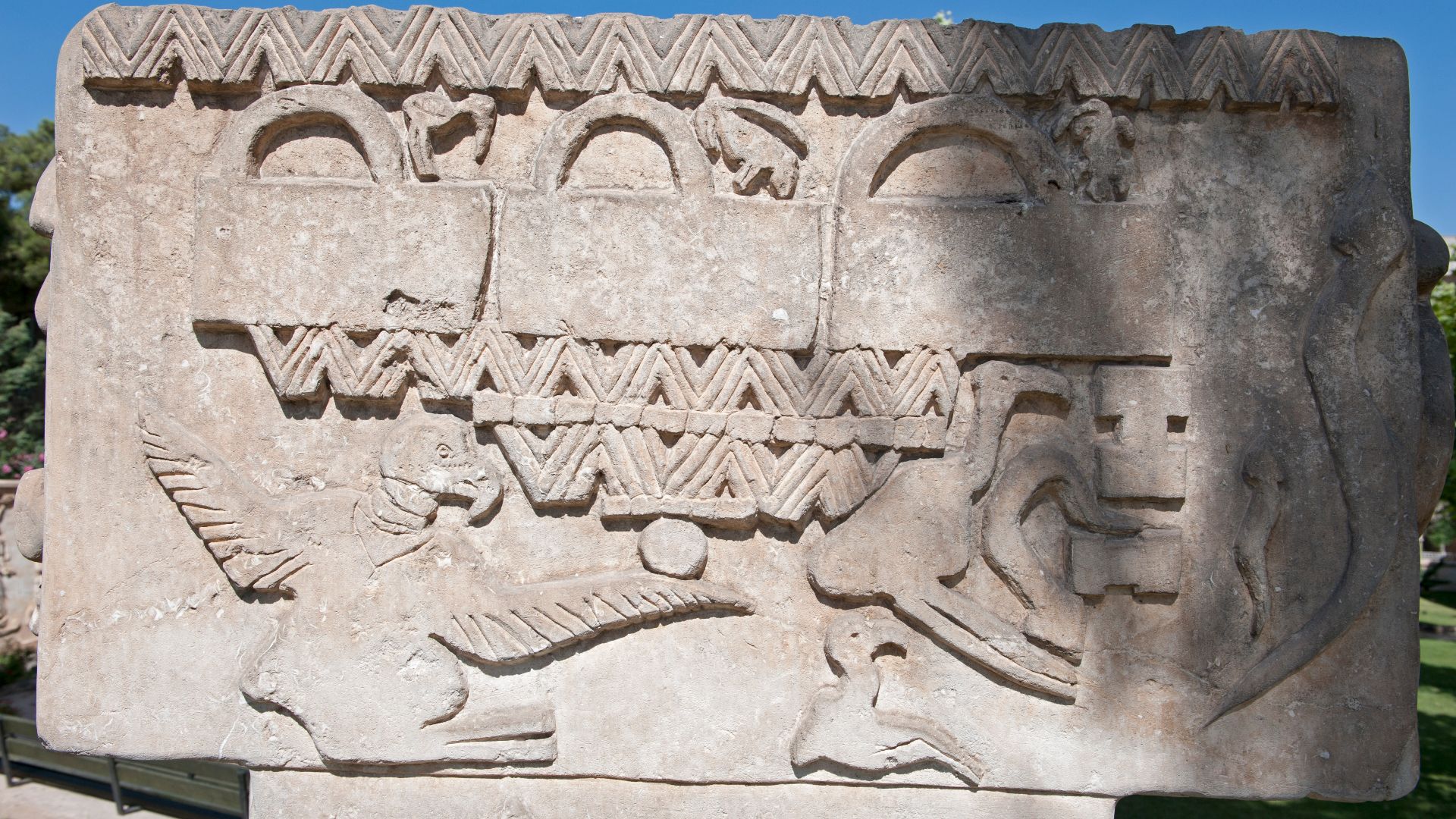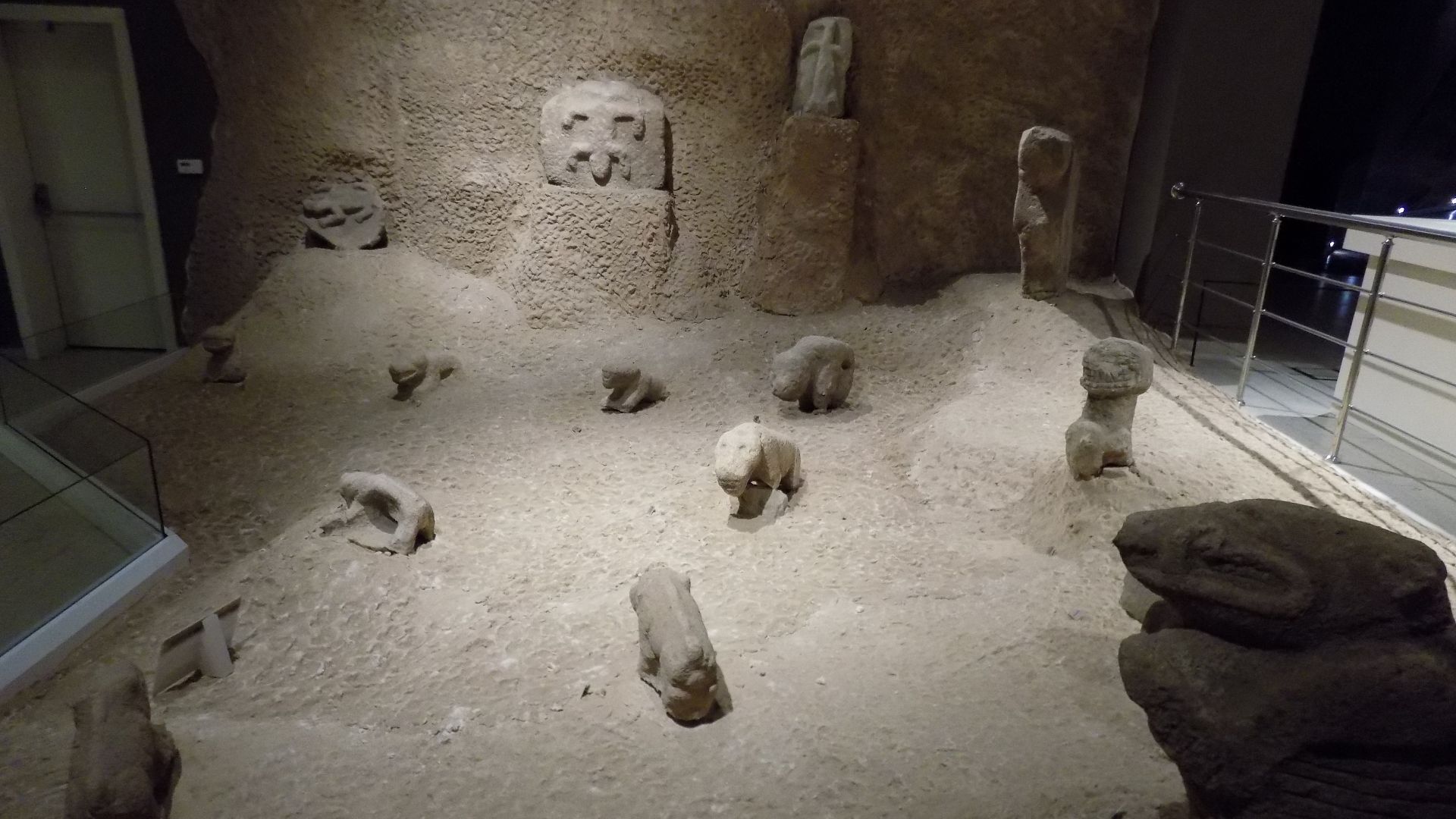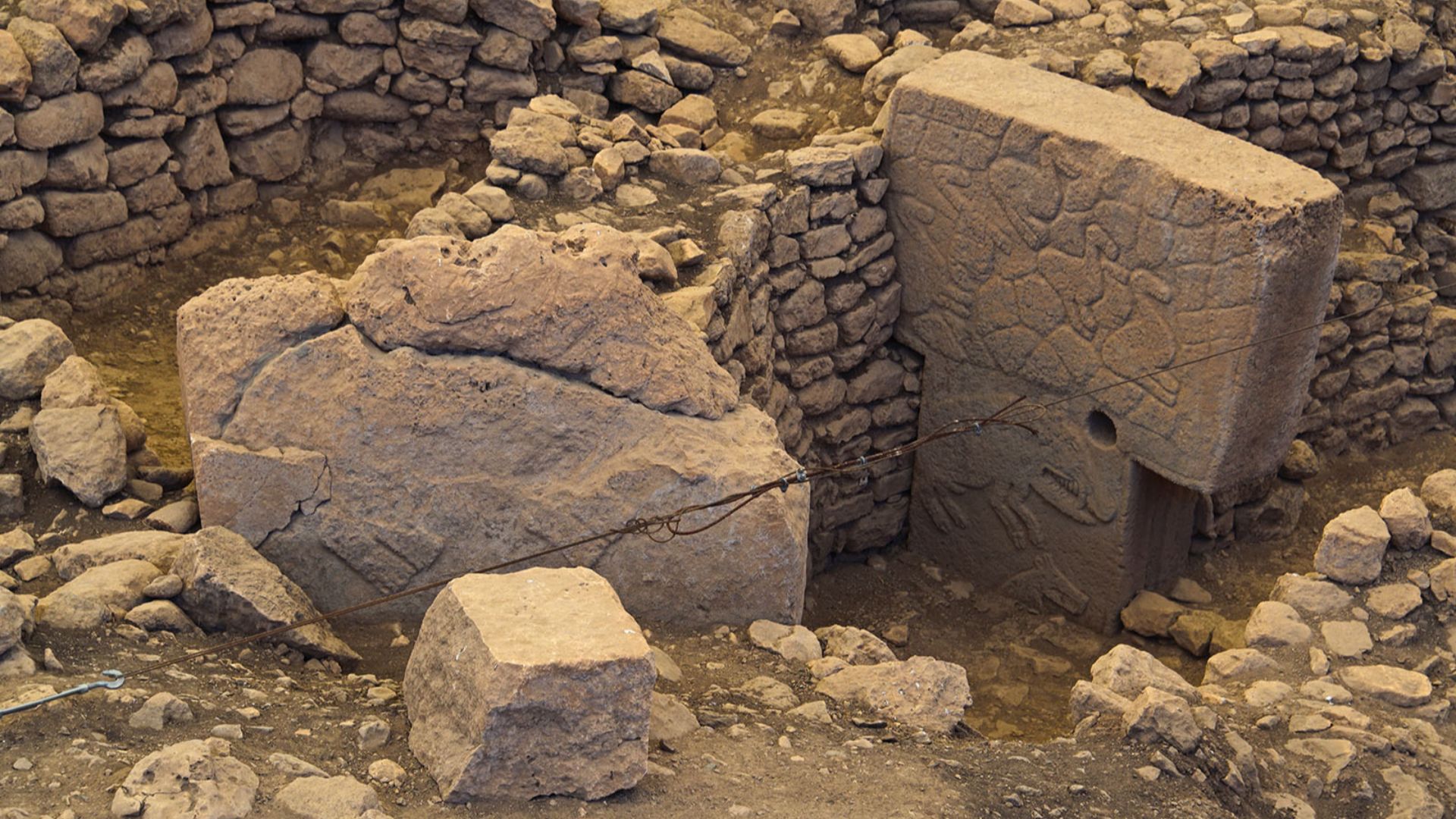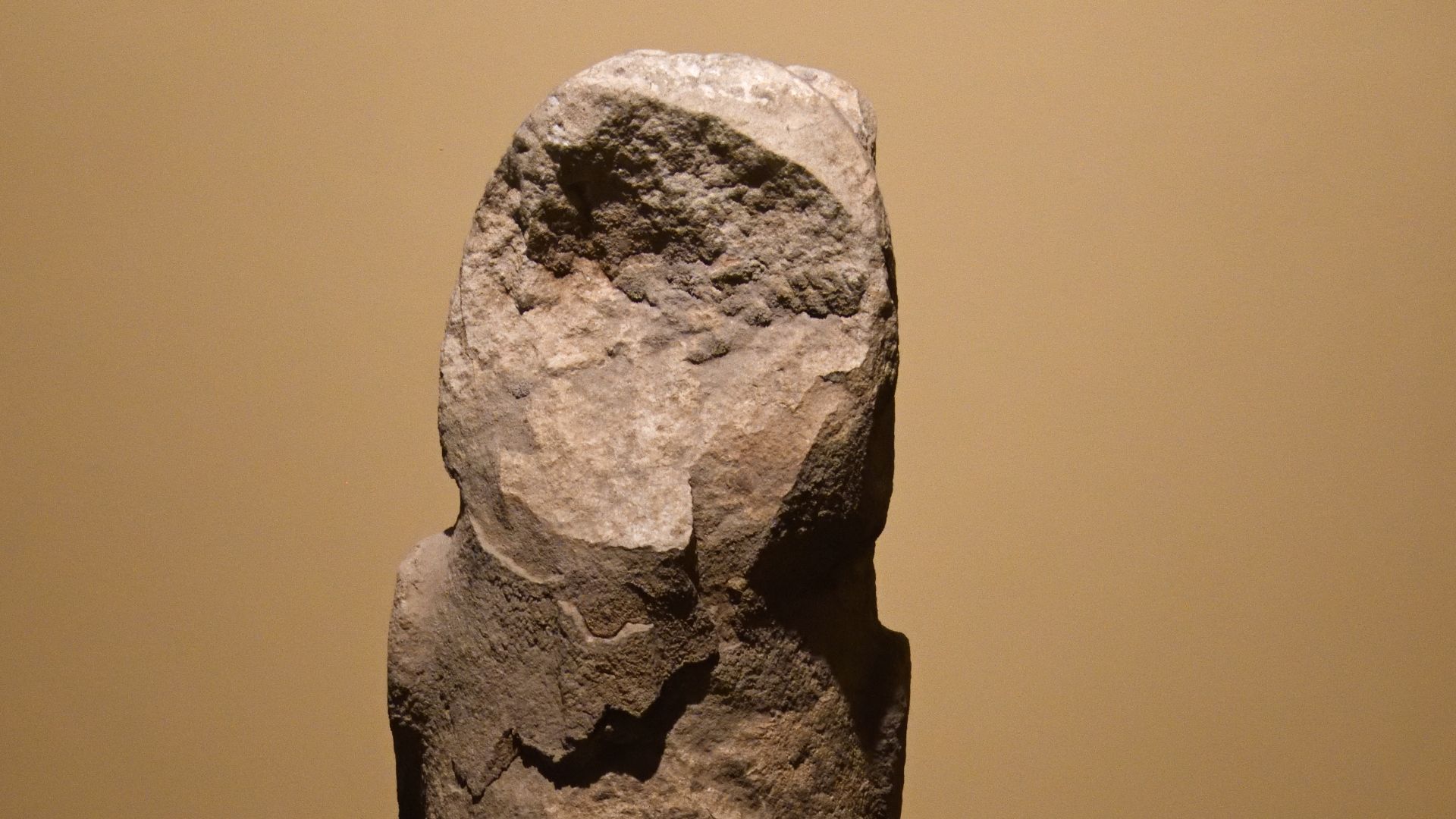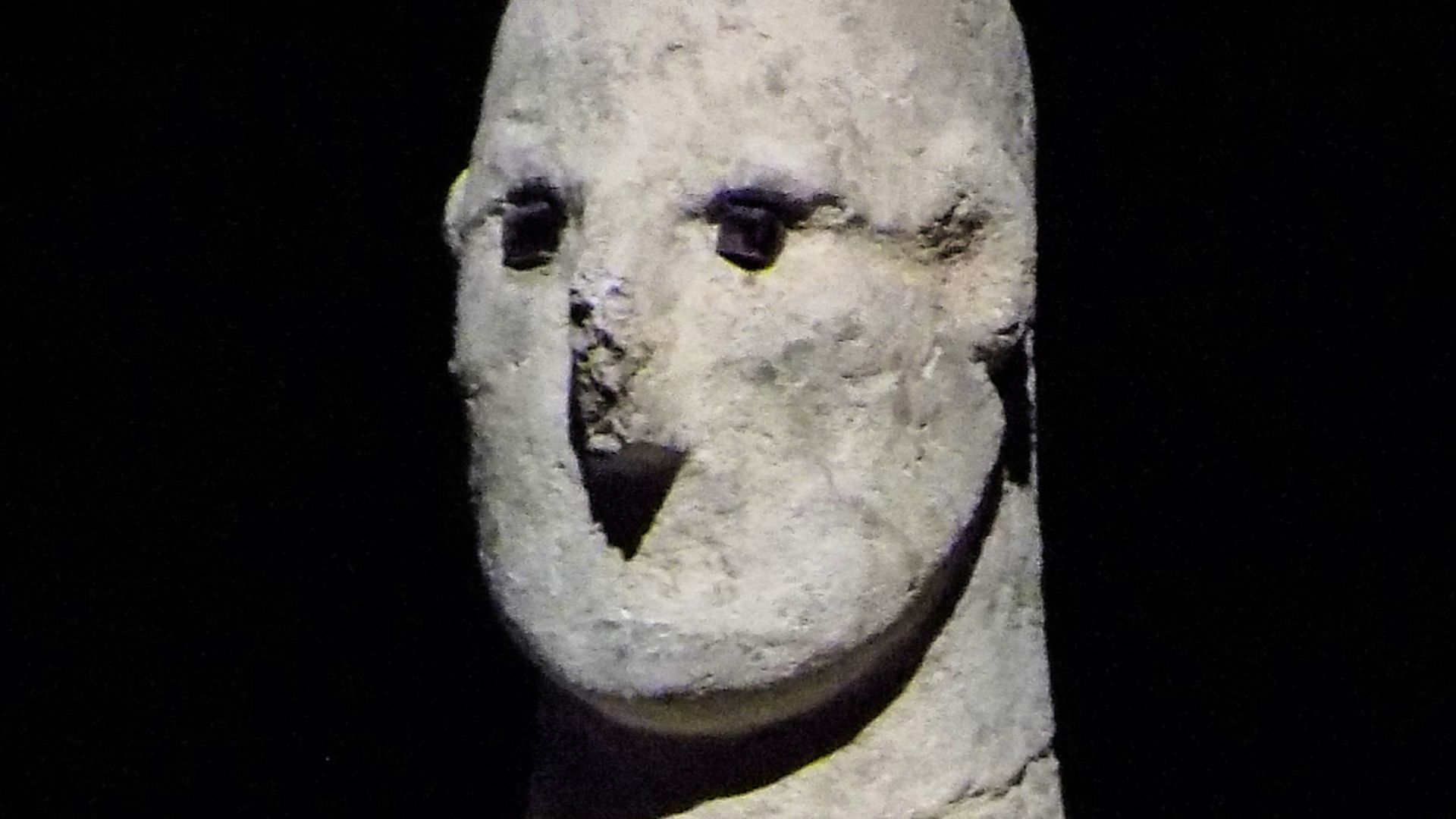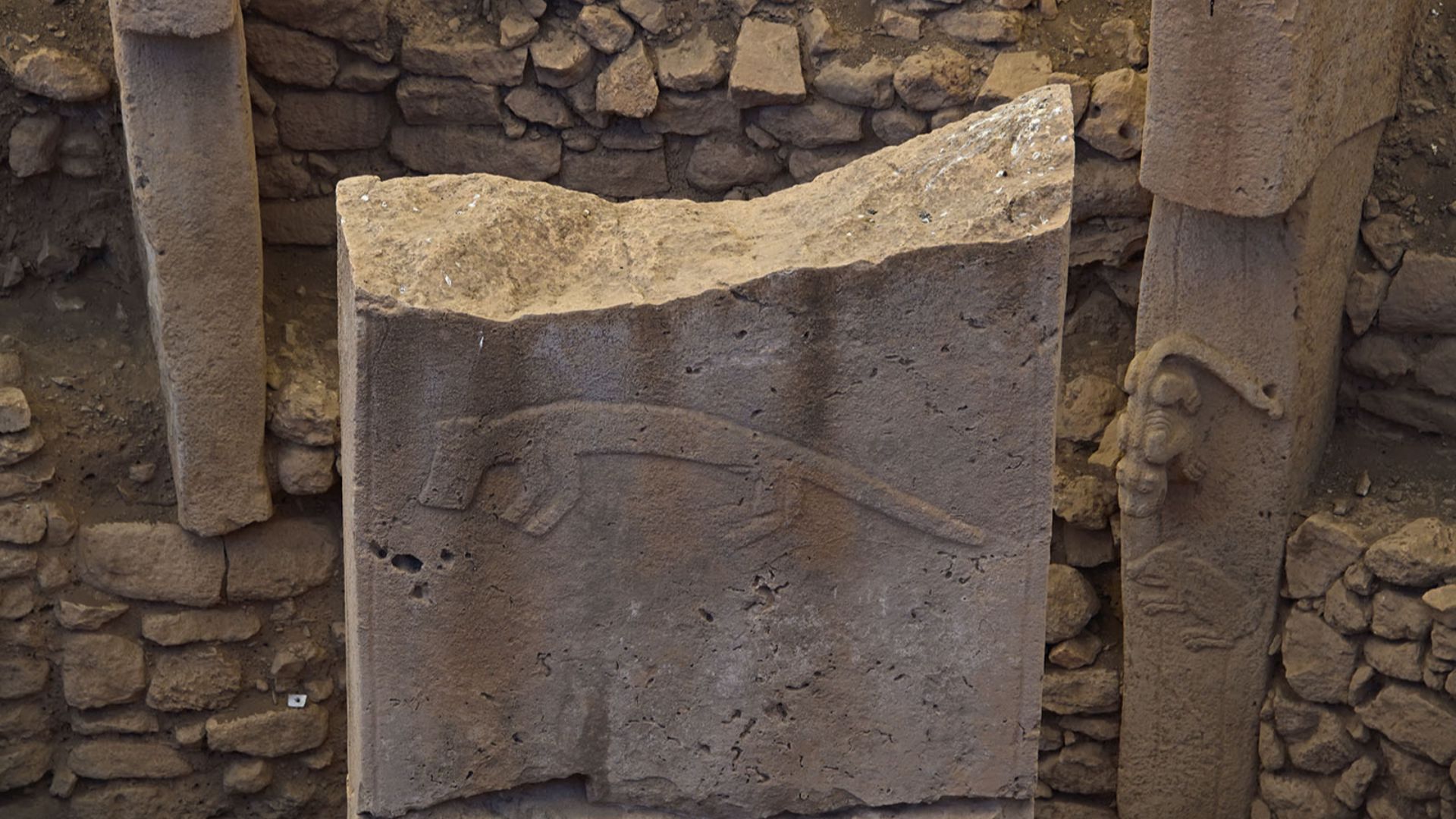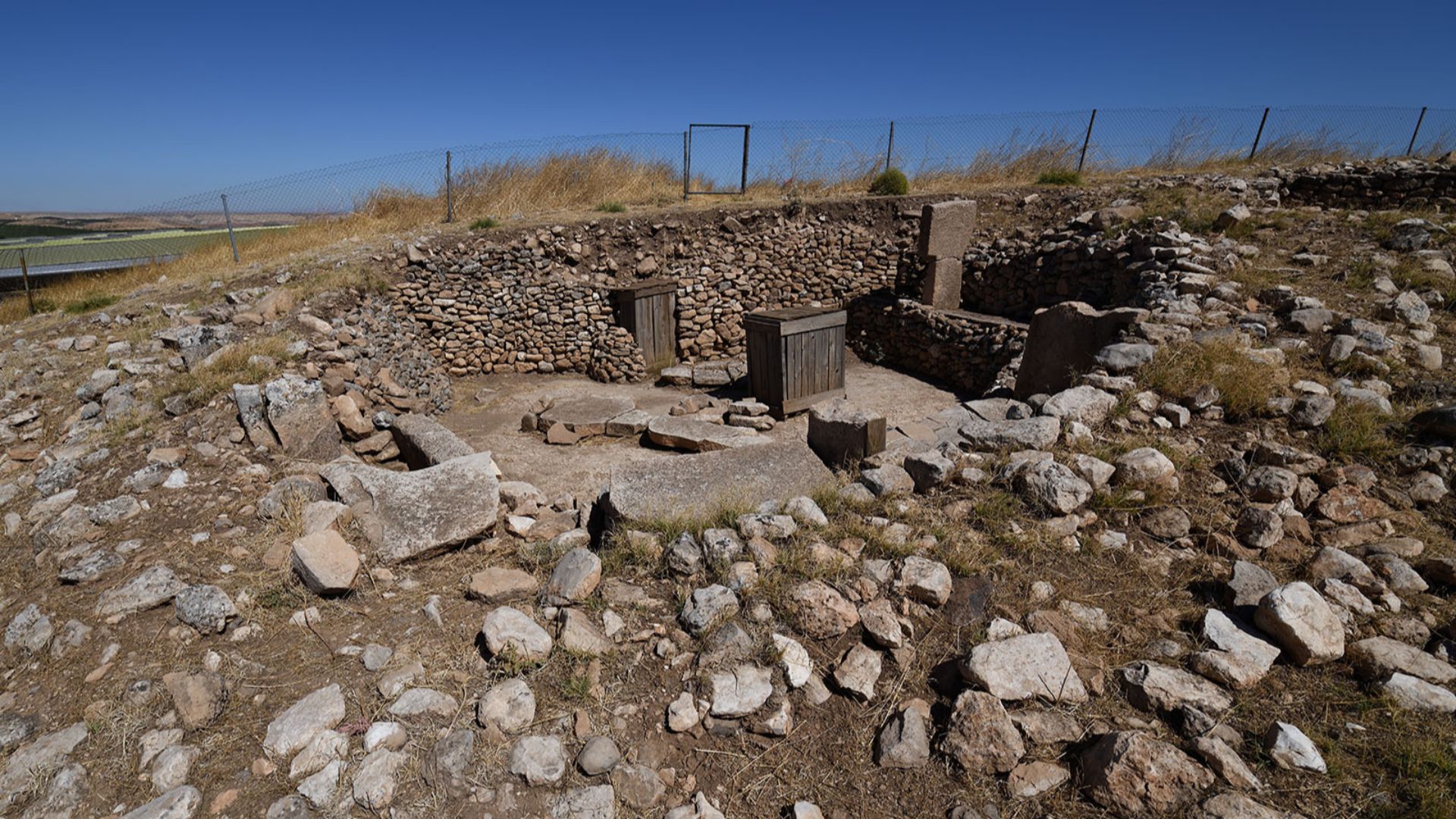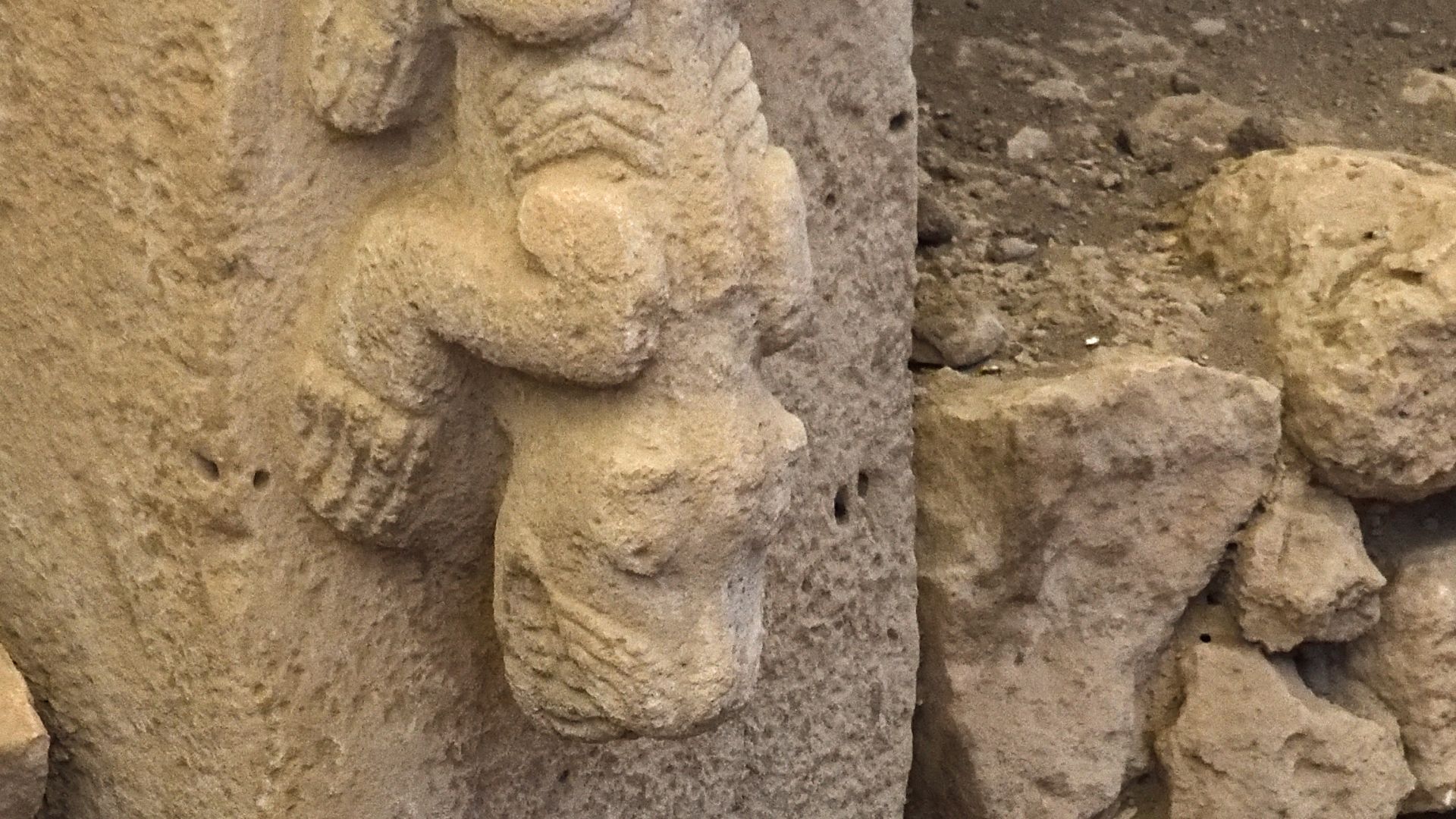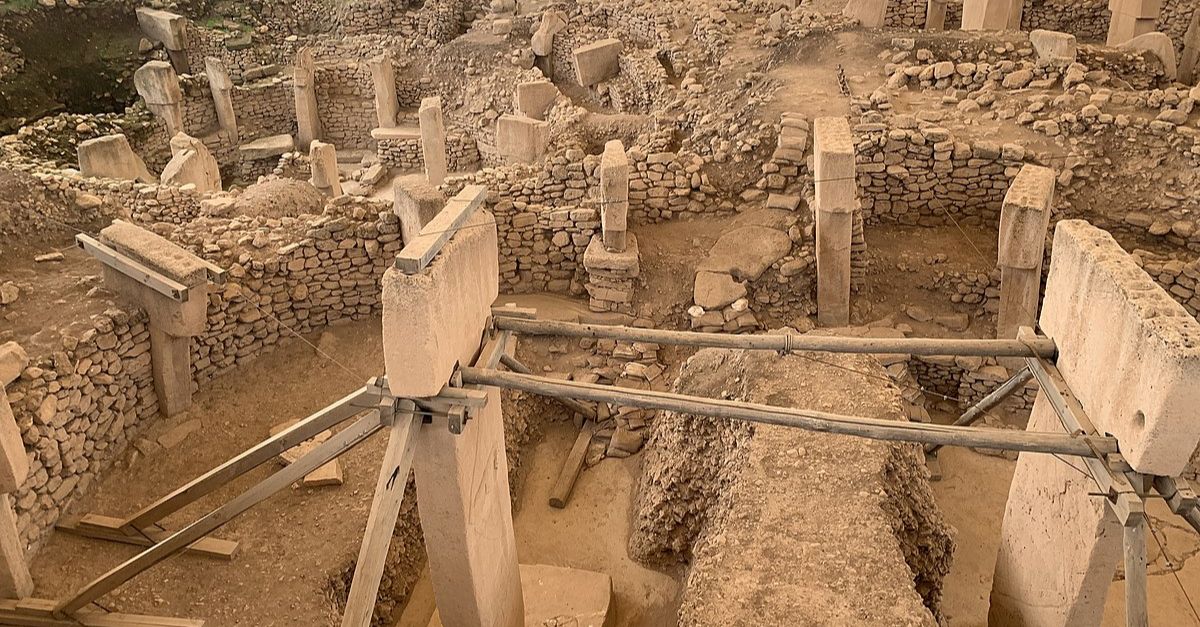Beneath Southeastern Turkey
For thousands of years, the hill looked unremarkable—just another bump in the dry land of southeastern Turkey. Beneath it, however, stood massive stone enclosures older than the pyramids. This was no ordinary hill.
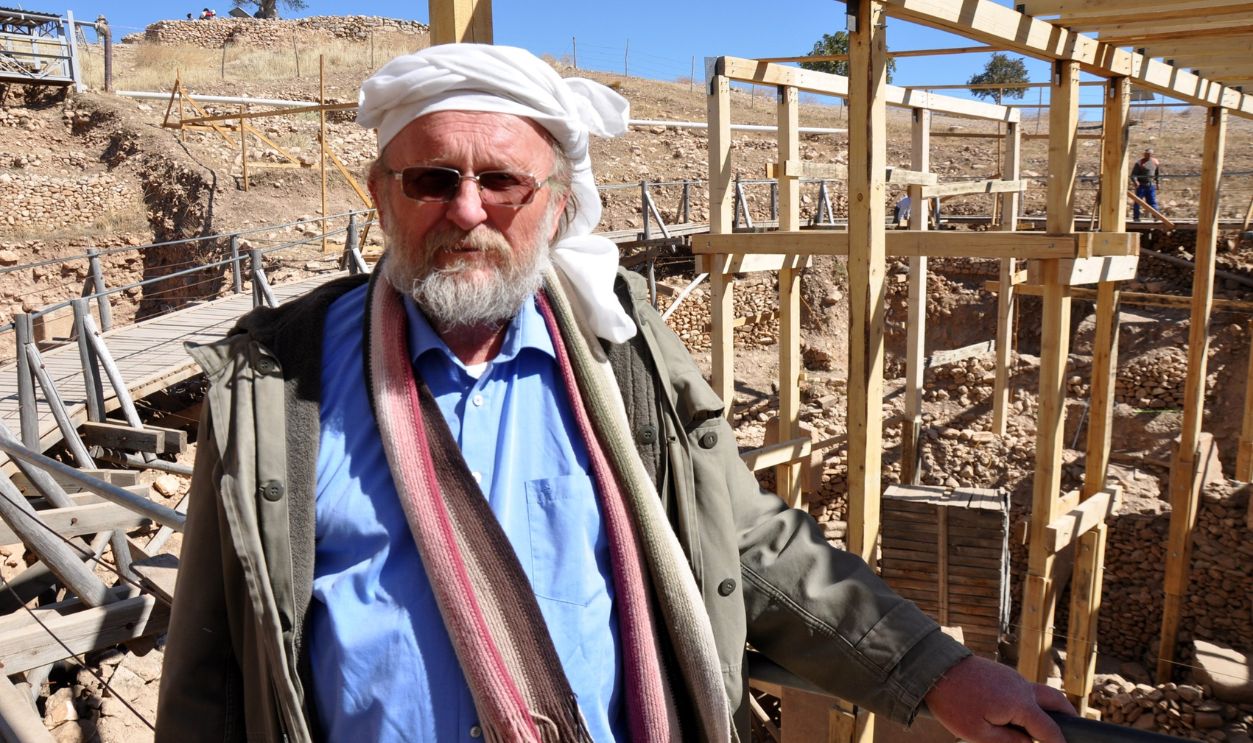
Global Curiosity
In 1994, German archeologist Klaus Schmidt recognized the significance of carved stones at Gobekli Tepe by building on earlier surveys. This realization marked the site as one of humanity’s earliest and most enigmatic religious spaces to challenge long-held assumptions about the origins of organized spiritual life.
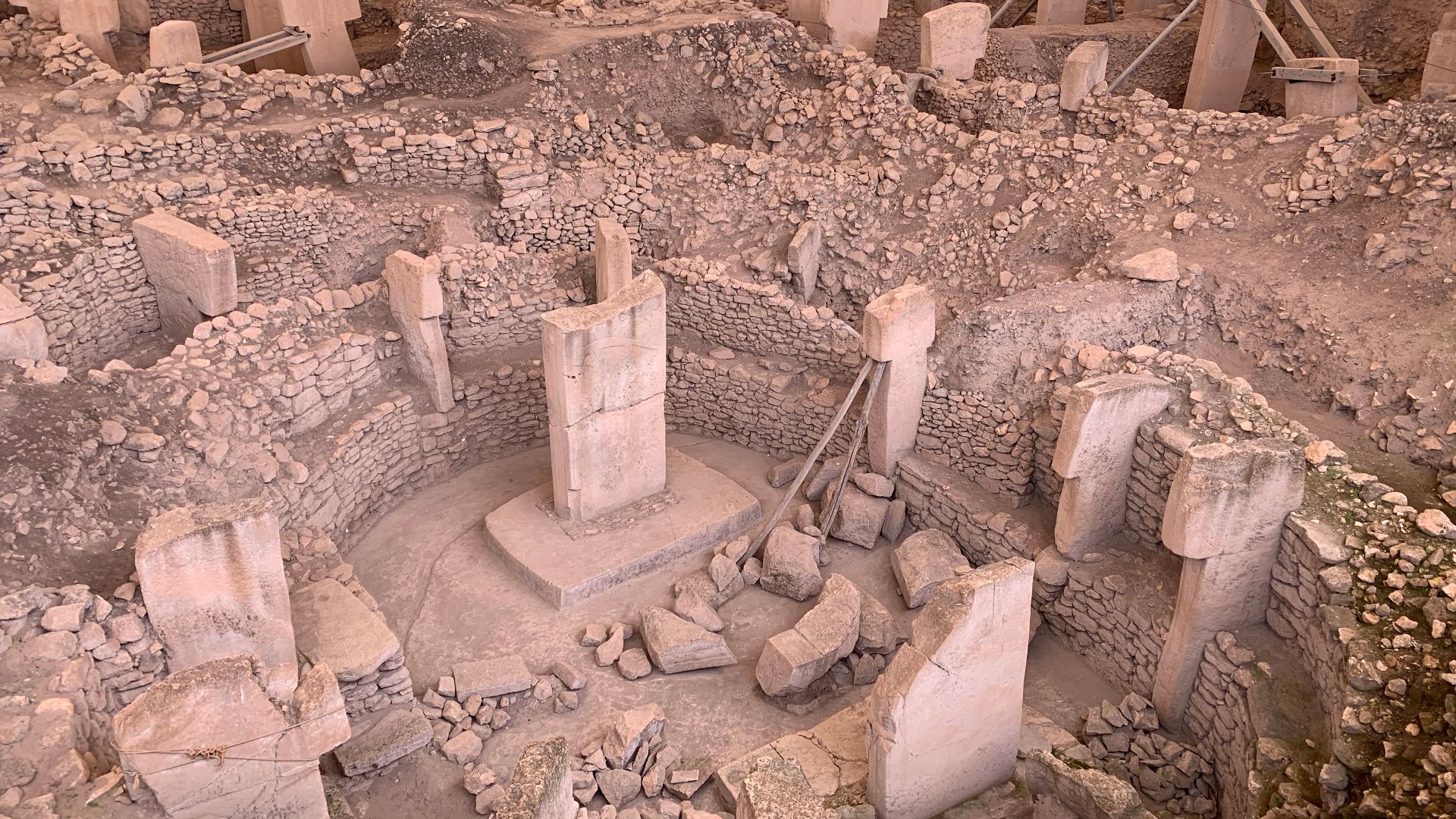 Beytullah eles, Wikimedia Commons
Beytullah eles, Wikimedia Commons
Klaus Schmidt’s Groundbreaking Work
Schmidt recognized what others had missed: this wasn’t a burial ground. It was something far older. With precision and patience, Schmidt led excavations that revealed ceremonial enclosures and complex reliefs. His insight redefined how scholars understood the origins of spirituality.
 Ordercrazy, Wikimedia CommonsKlaus Schmidt’s Groundbreaking Work (Cont.)
Ordercrazy, Wikimedia CommonsKlaus Schmidt’s Groundbreaking Work (Cont.)
This legacy continues to shape interpretations today. Yet the questions he opened remain unresolved. Why were the enclosures buried? What stories did the carvings tell? He laid the foundation for a new narrative that invites future archeologists to rethink Gobekli Tepe and the very roots of belief itself.
Why Gobekli Tepe Isn’t Just A Dig Site
Gobekli Tepe doesn’t just predate writing and agriculture—it flips the timeline. If belief systems came before cities and farming, then organized religion may have been the foundation, not the result, of civilization. That possibility is still reshaping archeology’s most cherished assumptions.
A Sacred Space Without Homes
Because the primary ritual enclosures from the Pre-Pottery Neolithic A period lack hearths or graves, researchers believe they were not intended for domestic life but for gathering. However, as the site evolved into the Pre-Pottery Neolithic B phase, domestic structures appeared alongside ritual spaces.
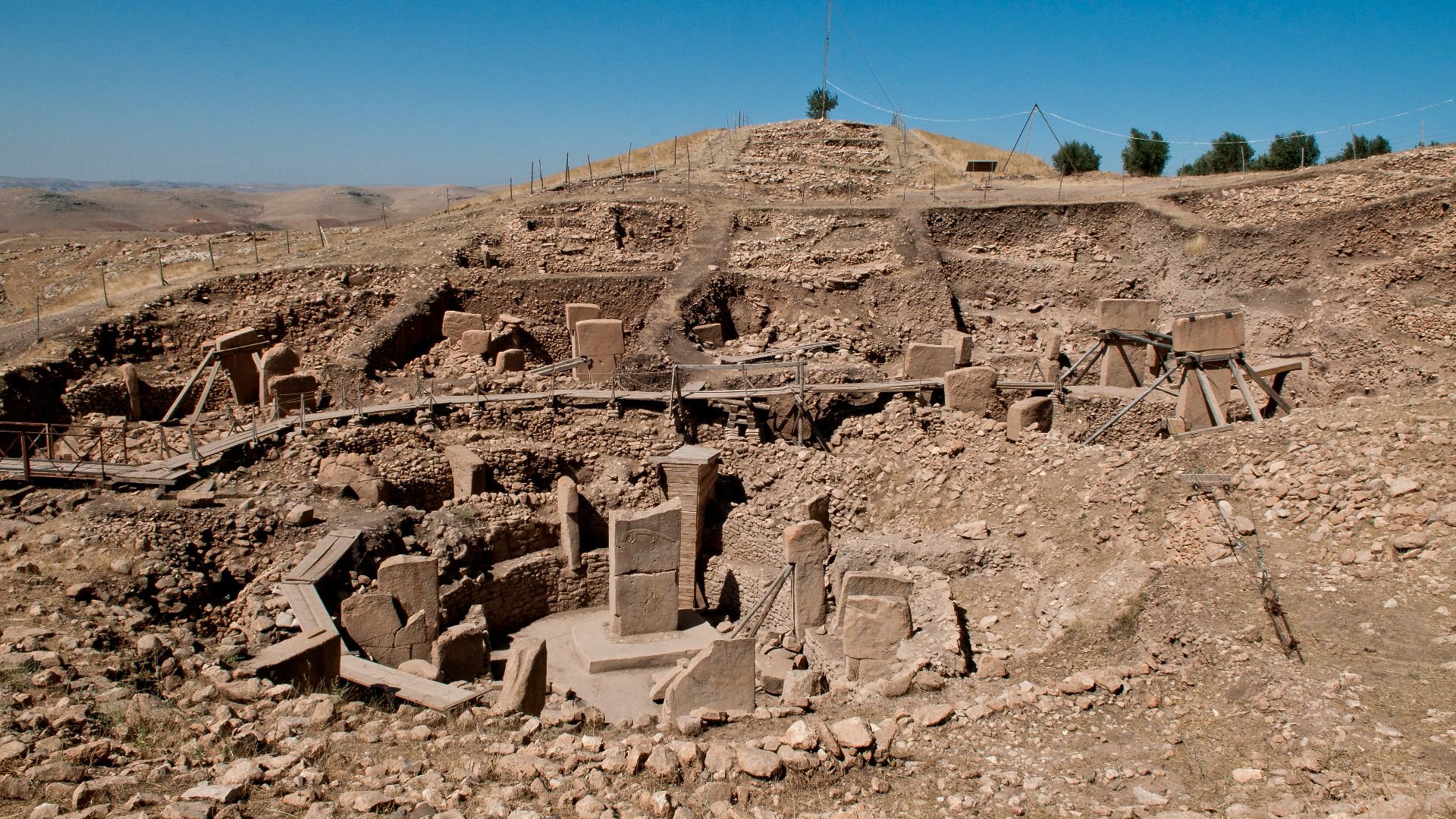 Teomancimit, Wikimedia CommonsA Sacred Space Without Homes (Cont.)
Teomancimit, Wikimedia CommonsA Sacred Space Without Homes (Cont.)
Furthermore, archeologists have noted the deliberate planning of these spaces. Their symmetrical layouts, lack of habitation debris, and repeated use over time suggest a focus on ritual rather than routine. In this silence, the site offers something rare: a glimpse of sacred architecture untouched by the noise of everyday life.
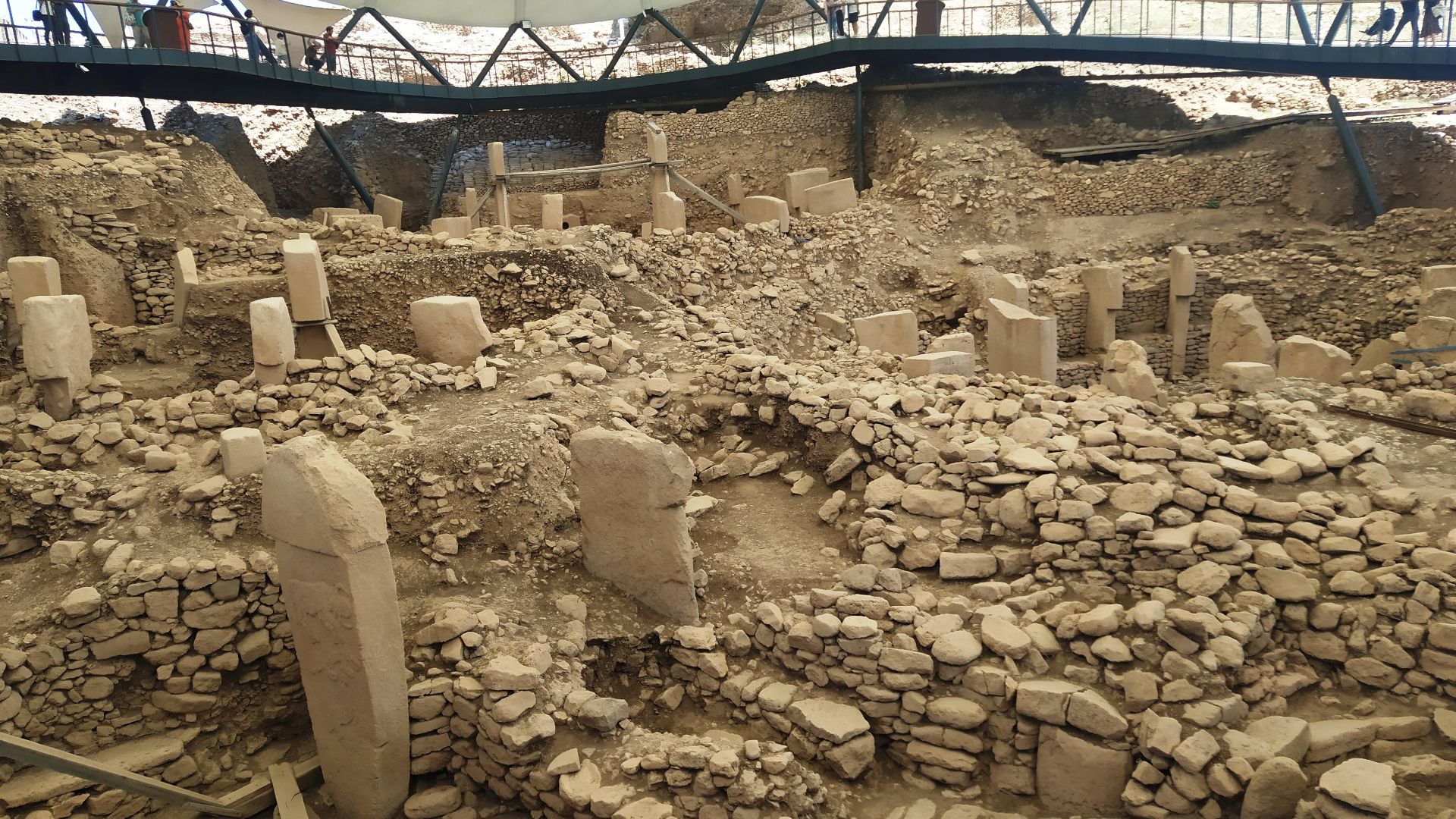 Radoslaw Botev, Wikimedia Commons
Radoslaw Botev, Wikimedia Commons
Who Built This And Why?
The builders were pre-agricultural societies, likely nomadic or semi-nomadic groups. Without metal tools or wheels, they hauled stone blocks weighing tons. Their effort hints at something deeply important, perhaps a spiritual obligation. Why they did this and how they coordinated it remains one of archeology’s biggest puzzles.
 Klaus-Peter Simon, Wikimedia Commons
Klaus-Peter Simon, Wikimedia Commons
Life In The Pre-Pottery Neolithic
Rough stone tools and temporary campsites defined life in this era. People relied on foraging, not farming. Though the world was physically harsh, there were signs of community structure. Gobekli Tepe offers a rare window into a world before domesticated food and permanent homes.
Nomads, Networks, And Monumental Collaboration
The builders likely moved seasonally, yet somehow coordinated efforts across distances. This implies shared beliefs and social bonds strong enough to unite scattered groups. Building something this grand required communication and leadership. Gobekli Tepe may be the first evidence of widespread symbolic cooperation among mobile people.
Tools Of Stone But Minds Full Of Meaning
There were no metal chisels here, just flint tools and determination. Yet the carvings are intricate and symbolic. These weren't random etchings but expressions of something deeply felt. Using crude tools for spiritual architecture reveals mental sophistication beyond what was once thought possible.
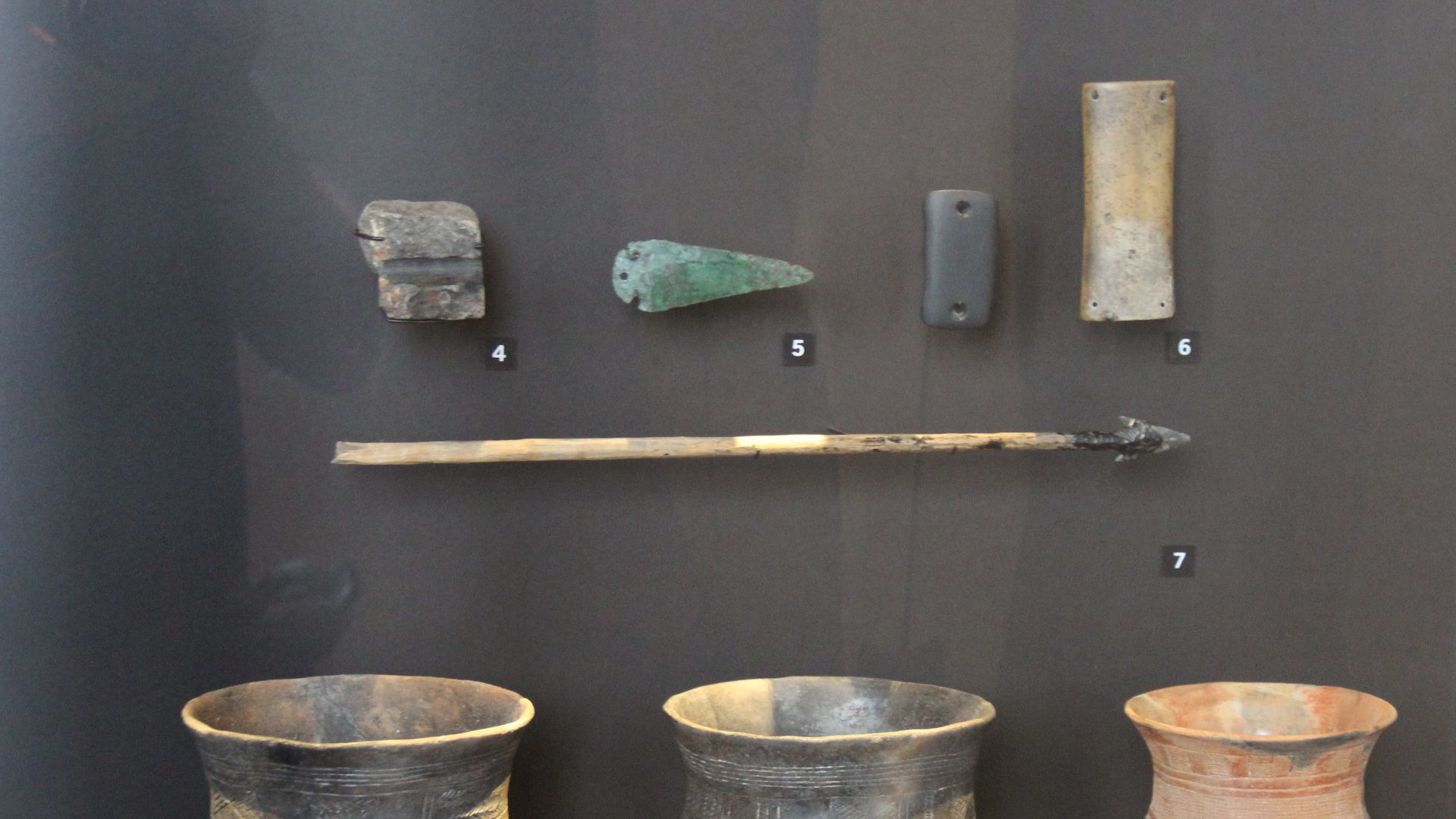 Gary Todd from Xinzheng, China, Wikimedia Commons
Gary Todd from Xinzheng, China, Wikimedia Commons
The Surrounding Land And Its Spiritual Potential
Gobekli Tepe stands on a limestone plateau with views stretching across Mesopotamia. It's possible the location itself held sacred value. Hills and changing skies may have served as backdrops for rituals. The site's placement speaks as much as the stonework it shelters.
 Volker Hohfeld, Wikimedia Commons
Volker Hohfeld, Wikimedia Commons
How The Absence Of Domesticity Hints At A Ritual Purpose
This wasn't a place to live but to gather. The silence of daily life here is telling. There are no storage pits and no pottery fragments. That emptiness becomes its kind of evidence. Gobekli Tepe may have existed not for survival but for something far more sacred.
The T-Shaped Pillars That Seem Strangely Human
Tall and looming, the T-shaped pillars dominate Gobekli Tepe’s enclosures. Some bear arms folded across their fronts as if in a solemn ritual. Their placement and form hint at something deeper, a presence imbued with meaning. Their shape and stillness suggest that it was more than structure.
The T-Shaped Pillars That Seem Strangely Human (Cont.)
Fixed in place and built to endure, these forms may have represented ancestors, guardians watching over every rite. As the living gathered in their shadow, memory turned to monument. Rituals unfolded beneath their silent gaze by linking generations across time through sacred permanence.
Animal Reliefs That Roar With Symbolic Power
Boars frozen mid-charge grip your attention first. Then serpents appear, coiled tight in a hush that implies something sacred. Foxes follow, bearing silent teeth. Each figure wasn’t placed for beauty alone. They may have embodied spirits invoked when the veil between worlds grew thin.
 Dosseman, CC BY-SA 4.0, Wikimedia Commons
Dosseman, CC BY-SA 4.0, Wikimedia Commons
Interpreting Sacred Creatures
Foxes stand alone and upright, their presence quietly dominant. Boars appear in clusters, while snakes weave across the bases like living threads of tension. Each of these animals may have held spiritual weight as a symbol of identity or protection within a belief system still being deciphered.
Vultures In A Spiritual Context
Perched on ancient stone, the vultures seem frozen mid-watch. They hover like sentinels, suspended between worlds. Their presence may nod to sky burial rites, where birds carried souls beyond. Perhaps they were symbols of a transition, a silent belief in life beyond the last breath.
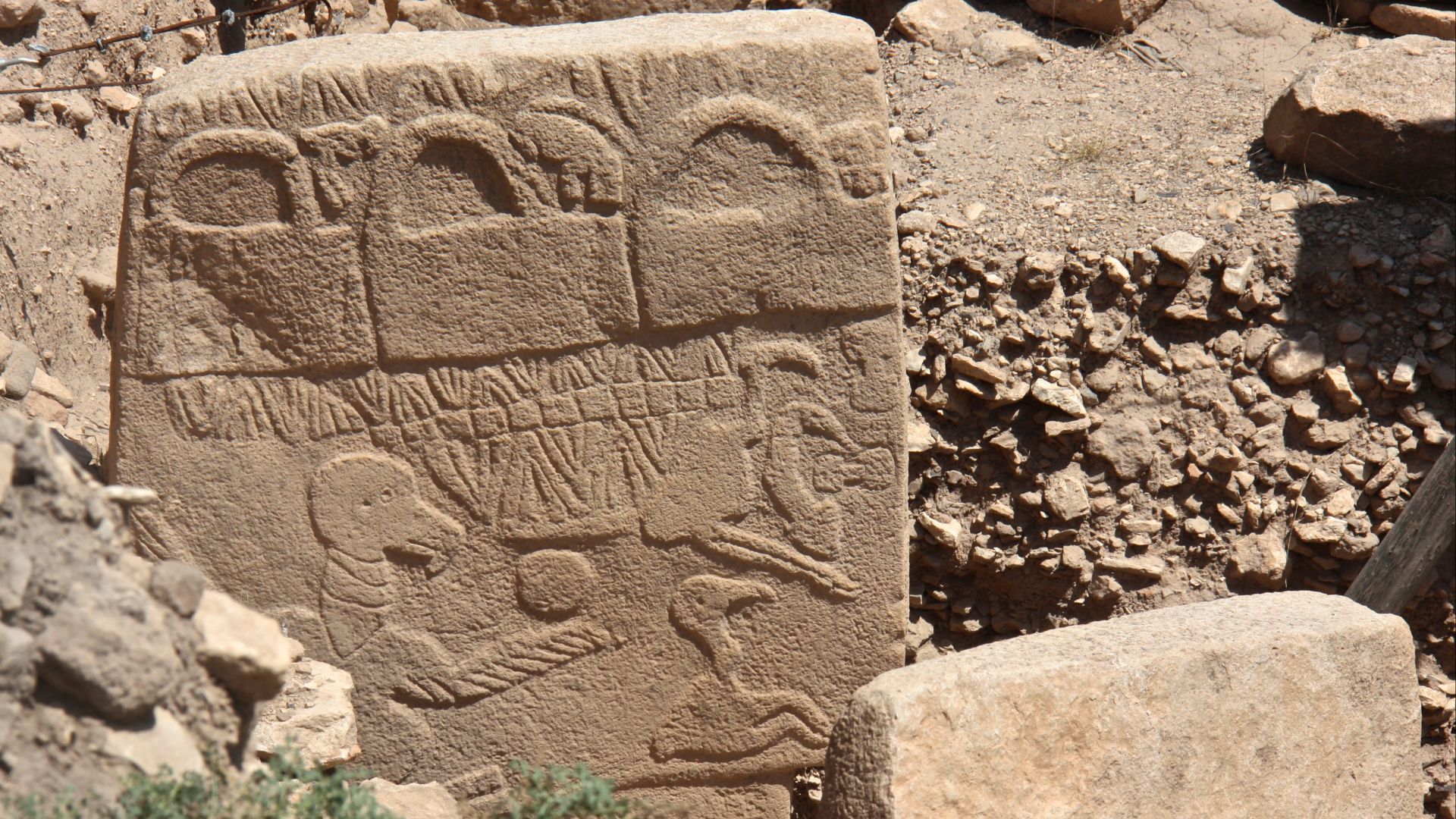 Sue Fleckney, Wikimedia Commons
Sue Fleckney, Wikimedia Commons
From Predator To Protector
The creatures carved into the pillars weren’t necessarily threats. They may have been totems—protectors linked to family lines or roles within early society. They may have seen what we see as wild or divine. These beings may even have shaped identity as much as ritual.
The Circular Enclosures As Spiritual Arenas
The moment you step into one of these circles, you feel a shift, subtle but undeniable. Though open to the sky, the space feels sealed from the ordinary world. The enclosures weren’t designed for idle wandering instead they were hinting at a place set apart for ceremonies.
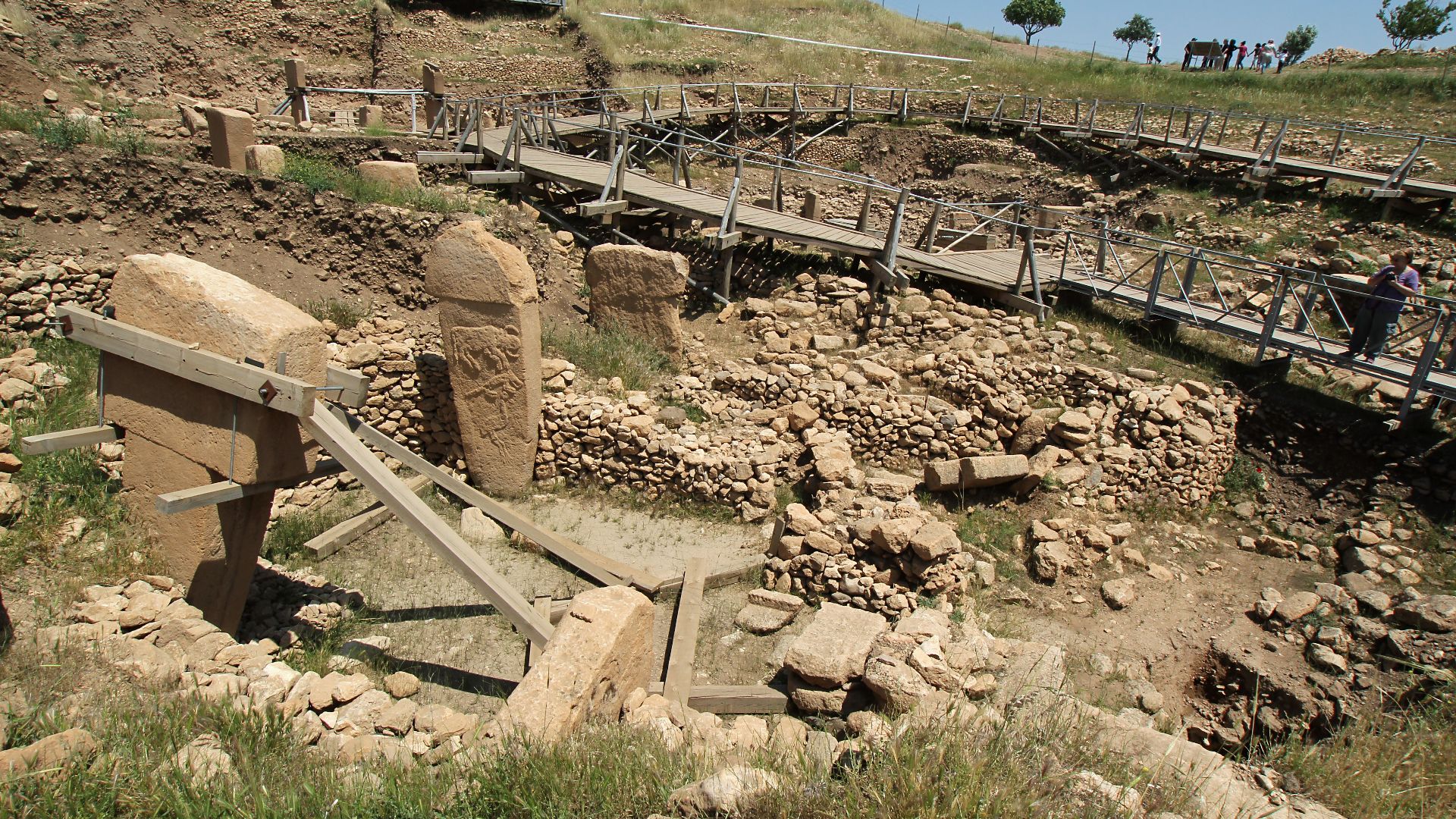 Klaus-Peter Simon, Wikimedia Commons
Klaus-Peter Simon, Wikimedia Commons
The Circular Enclosures As Spiritual Arenas (Cont)
Narrow passages and deliberate sequencing imply movement with intent. You could even imagine initiates or leaders progressing through the ceremony, each step part of a spiritual journey, guided by the carvings and overseen by the watching stone sentinels.
Layered Construction
Beneath each enclosure lies an earlier one, buried deliberately. This layering hints at reverence—each new structure is raised concerning the old. Like chapters of a story etched in stone, Gobekli Tepe’s architecture may reflect spiritual continuity over generations.
Carvings As Myth, Memory, And Message
These stones speak. Their carvings may not be a language we recognize, but their repetition and placement suggest storytelling. Scenes and creatures were likely charged with meaning. Perhaps these were myths made visible, a sacred narrative preserved not in books but in pillars.
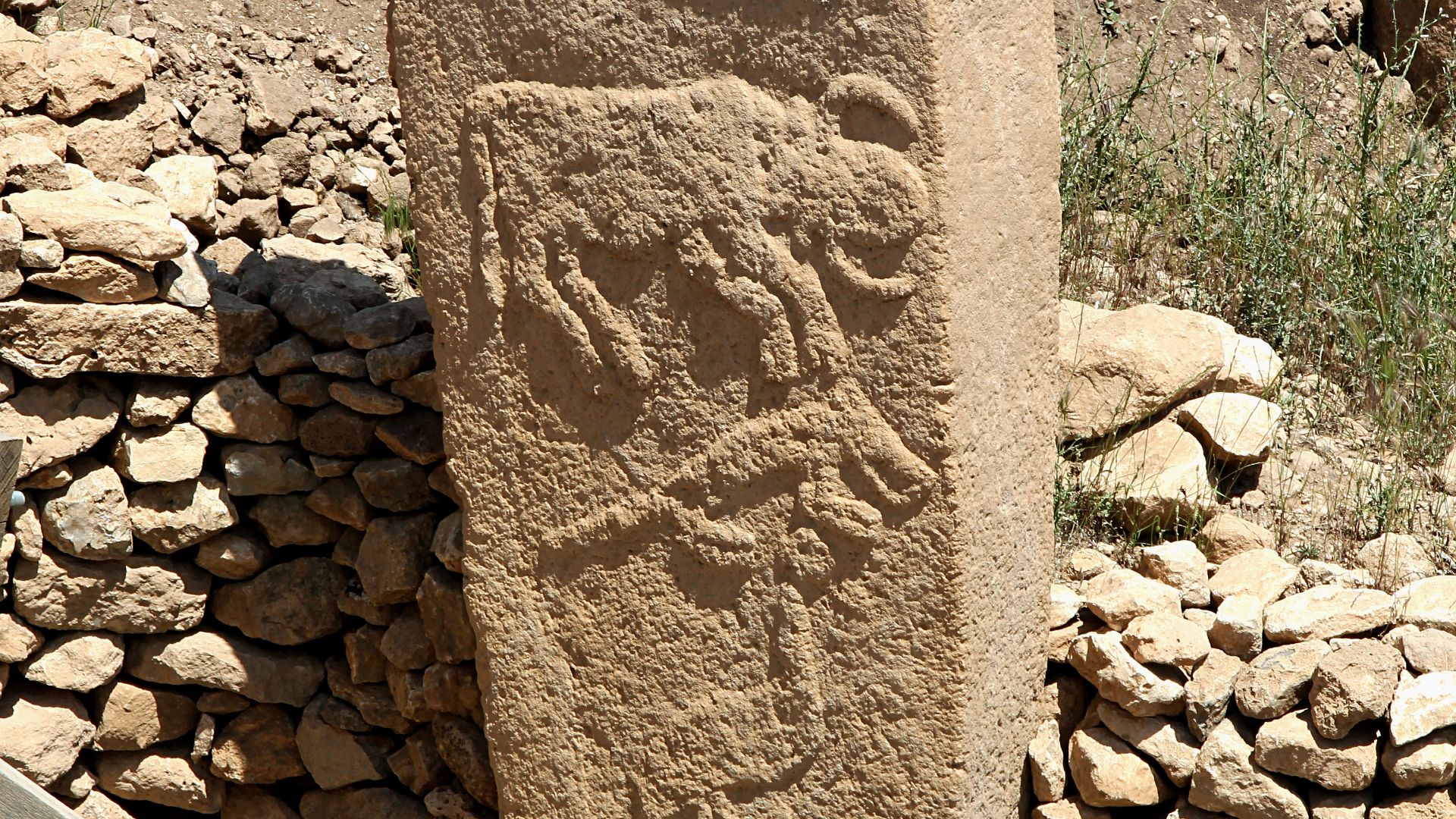 Klaus-Peter Simon, Wikimedia Commons
Klaus-Peter Simon, Wikimedia Commons
Monumentality As Message
The stones rise far beyond what utility would demand. Their towering height speaks not to function but to feeling. Each placement, each carved face, seems designed to awe. In scale and permanence, the builders shaped not just stone but meaning, drawing sacredness from sheer presence alone.
Was This A Stage For The Spirits Or The Living?
It’s hard to tell who these spaces truly served. Were they arenas for the living to honor the divine or places where spirits gathered, invoked by ritual? Maybe both. Gobekli Tepe’s circles blur that line. Here, the seen and unseen likely met, if only briefly.
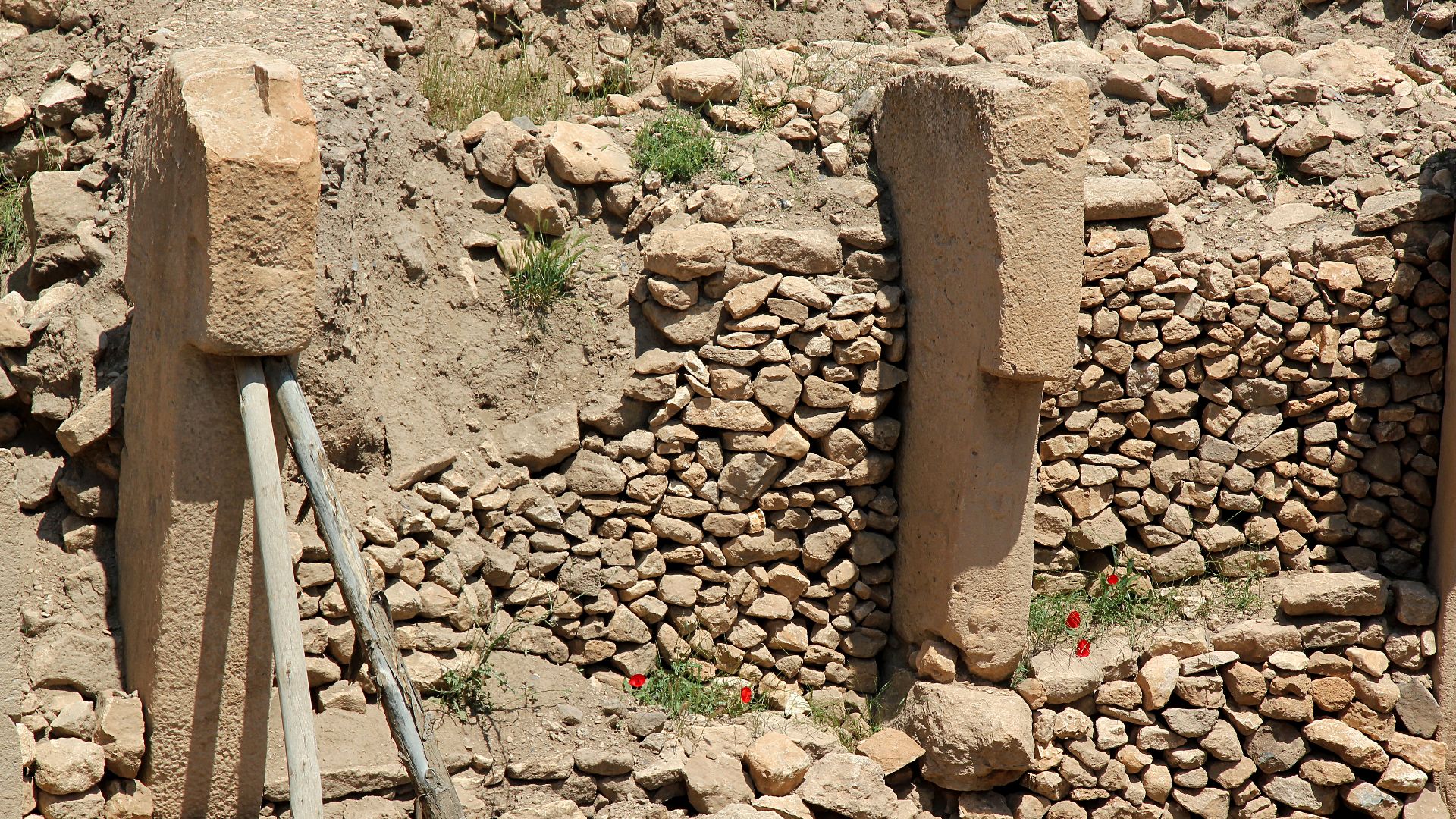 Klaus-Peter Simon, Wikimedia Commons
Klaus-Peter Simon, Wikimedia Commons
Life In Everything, Everywhere
Animism is the belief that everything, animals, trees, rocks, even the wind, carries a spiritual essence. It’s one of humanity’s oldest belief systems. Rather than seeing the world as lifeless matter, animists saw connection and meaning embedded in every corner of the natural world.
The Birth Of Spiritual Order Before Social Hierarchy
Long before kings or priests, there may have been guides—those who felt attuned to spirits and signs. The rituals at Gobekli Tepe suggest early structures of belief, not rule. Spiritual understanding could have formed a kind of order even before formal leadership emerged.
Interpreting The Vulture Imagery In Funerary Terms
In some early cultures, vultures represented spiritual transition. So, the presence of vultures at Gobekli Tepe may represent their role in the excarnation—exposing bodies to the elements—which was believed to represent a sacred passage. These images may reflect beliefs in purification or guidance beyond physical death.
Sky Burials, Soul Journeys, And Possible Afterlife Beliefs
Sky burials involved placing the dead where birds could carry the soul to the heavens. While we can’t confirm this practice at Gobekli Tepe, the symbolism fits. The architecture and carvings suggest a belief in travel beyond death, where spirits moved upward, carried by winged messengers.
 Dosseman, CC BY-SA 4.0 , via Wikimedia Commons
Dosseman, CC BY-SA 4.0 , via Wikimedia Commons
Sky Burials, Soul Journeys, And Possible Afterlife Beliefs (Cont.)
This upward movement may echo early cosmologies in which the sky was home to gods or ancestors. By associating death with ascent, the builders could have expressed a hope that the spirit returns to its origin by joining an eternal cycle beyond earthly life.
The Sacred Role Of Feasting In Early Ceremonies
Feasting carried significance beyond nourishment. It was a ritual. Evidence of communal meals at Gobekli Tepe points to ceremonial gatherings. Sharing meat and drink could honor the dead or invoke spirits. These acts may have bonded communities as much as they connected them to the divine.
 Volker Hohfeld, Wikimedia Commons
Volker Hohfeld, Wikimedia Commons
Were These Enclosures Sites Of Shamanic Trance?
Some researchers believe the circles were built to induce altered states. Enclosed spaces and ritual movement could support trance rituals. If shamans stood within these circles, they might have mediated between worlds by carving spirit pathways in stone and leading ceremonies that bridged the seen and unseen.
 Jean Housen, Wikimedia Commons
Jean Housen, Wikimedia Commons
The “First Temple” Debate
Gobekli Tepe is often called the world’s first temple, but not all scholars agree. It predates known cities and agriculture, yet its precise function remains unclear. Without written records, calling it a temple may oversimplify a space that could’ve uniquely blended ritual and meaning.
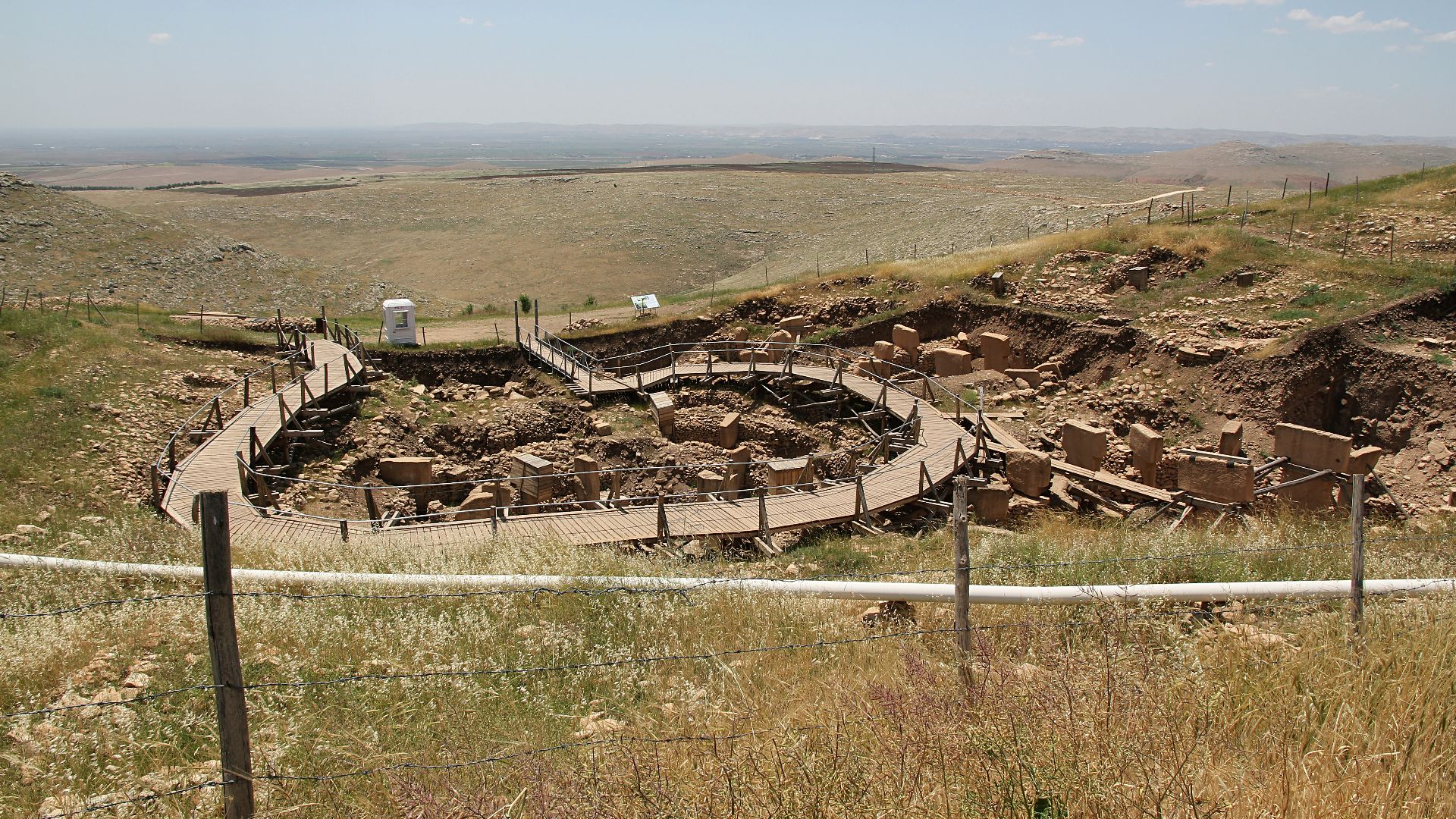 Klaus-Peter Simon, Wikimedia Commons
Klaus-Peter Simon, Wikimedia Commons
Why The Builders Buried It All
One of Gobekli Tepe’s most perplexing mysteries is its intentional burial. The enclosures weren’t torn down. Instead, they were methodically filled in, layer by layer. This suggests reverence, not abandonment. What were they preserving or hiding? It’s possible the burial was part of the ritual life of the site.
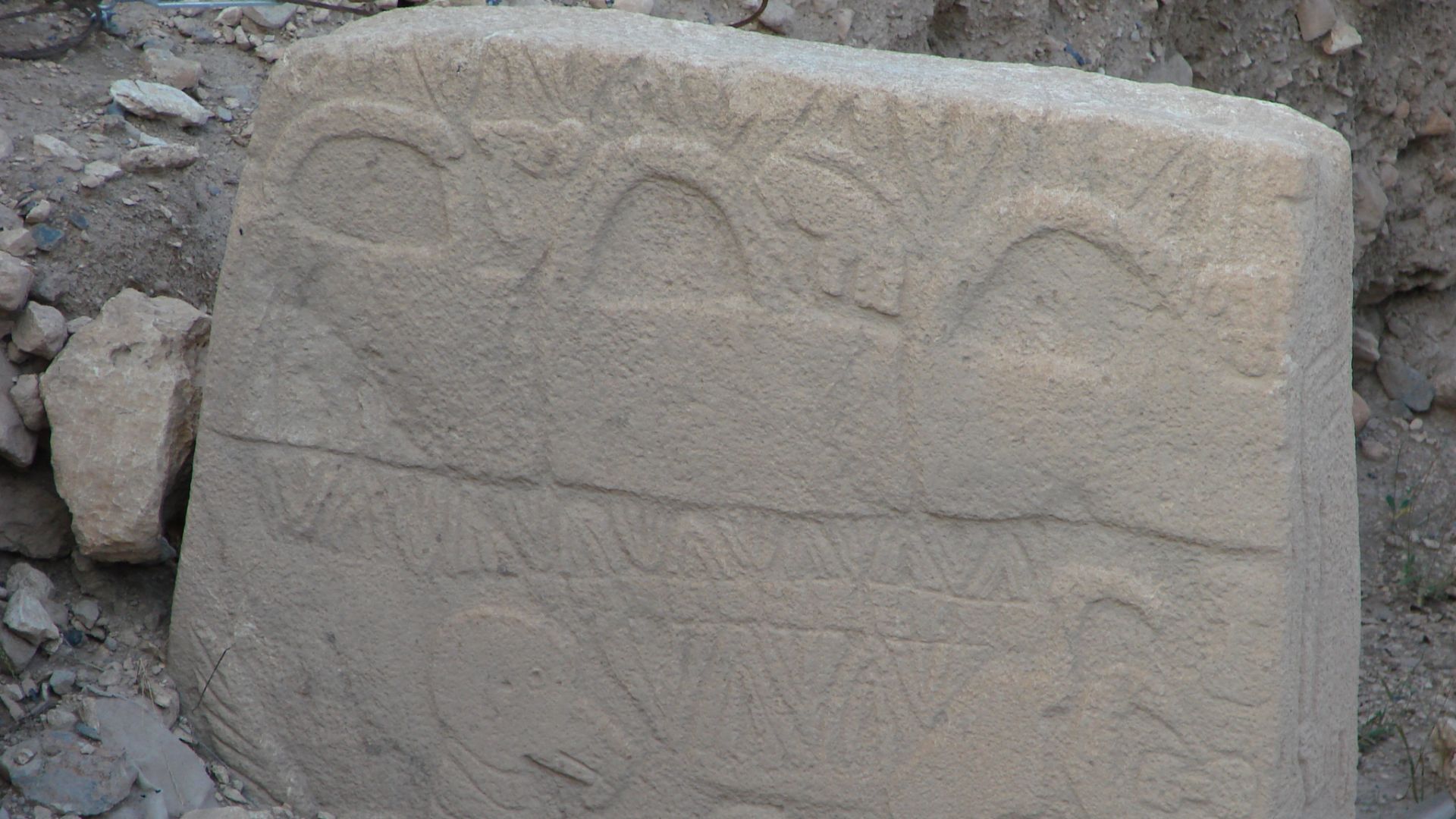 Guerin Nicolas, Wikimedia Commons
Guerin Nicolas, Wikimedia Commons
Star Alignments And Cosmic Symbolism
Some believe Gobekli Tepe’s layout mirrors celestial patterns. Pillars and carvings may reflect constellations or solar events. While intriguing, these theories remain speculative. Without direct evidence, interpretations of cosmic alignment risk projecting modern astronomy onto ancient minds that may have seen the sky differently.
Shamans, Priests, Or Something Entirely Different?
Who led the ceremonies here? Without graves or thrones, it’s unclear. Spiritual authority may have looked very different before hierarchy took form. So, these guides may not fit our labels. They might have been visionaries, storytellers, and figures who shaped experience through symbols or movement.
 O. H. von Lode, Wikimedia Commons
O. H. von Lode, Wikimedia Commons
What Makes This Site Globally Significant
Gobekli Tepe challenges our deepest historical assumptions. It shifts the roots of religion backward in time and decouples belief from settlement. Today, it serves as a cultural touchstone by reminding us that long before temples rose in empires, a sacred vision stirred in stone among wanderers.
What Makes This Site Globally Significant (Cont.)
Its significance also lies in its role as a scientific frontier. Advances in dating methods and archeological conservation have all been tested here. Gobekli Tepe holds relevance far beyond its age. Through the tools and debates it inspires, it continues to shape the future of archeological inquiry.
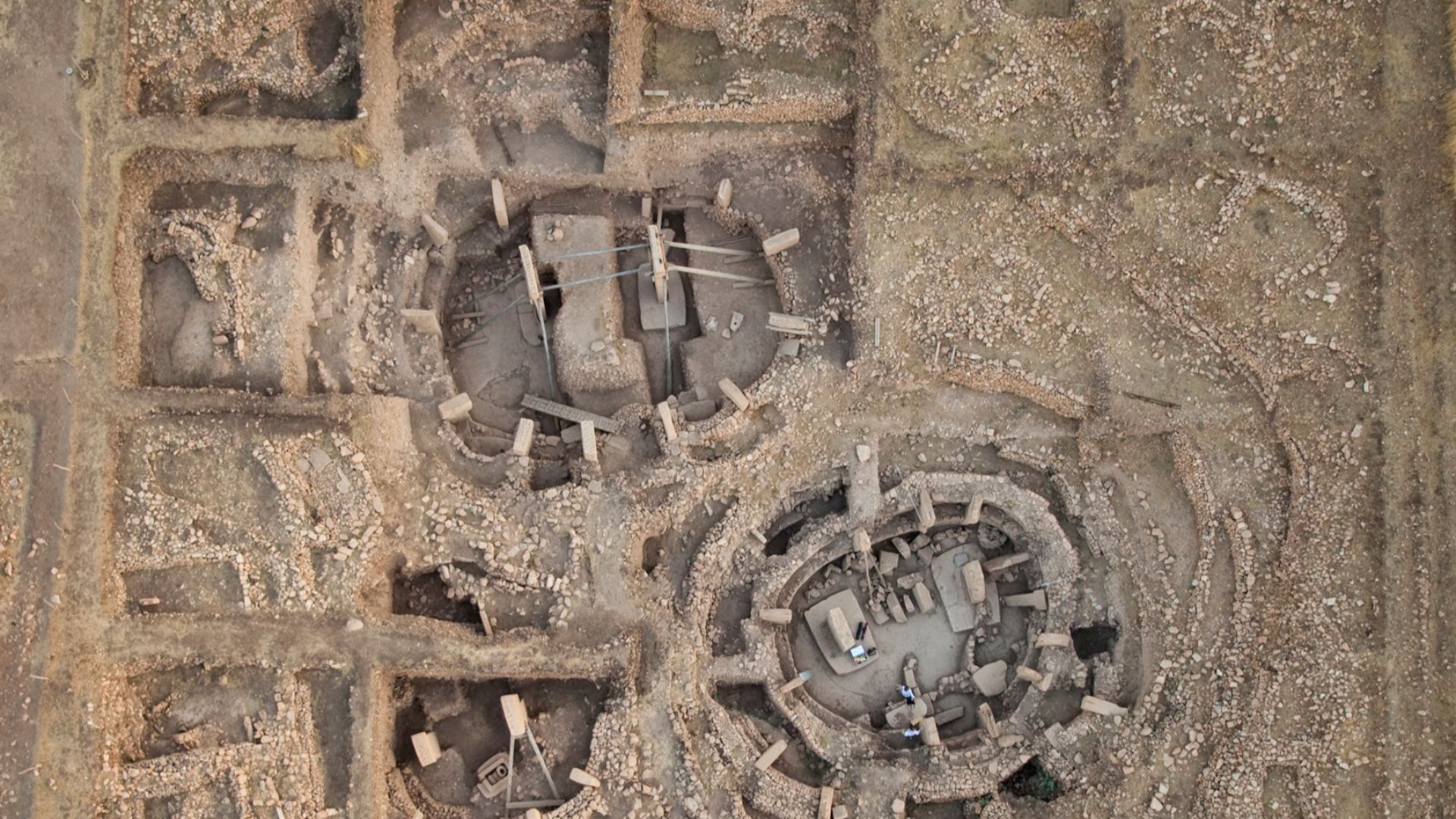 German Archaeological Institute, photo E. Kucuk., Wikimedia Commons
German Archaeological Institute, photo E. Kucuk., Wikimedia Commons
The Spiritual Message Buried For Millennia
Gobekli Tepe speaks through silence. Carvings and empty spaces whisper when modern humans carve their questions into stone. Its buried pillars remind us that belief systems can fade, but their essence remains. In remembering them, we rediscover part of our beliefs and what makes us human.


